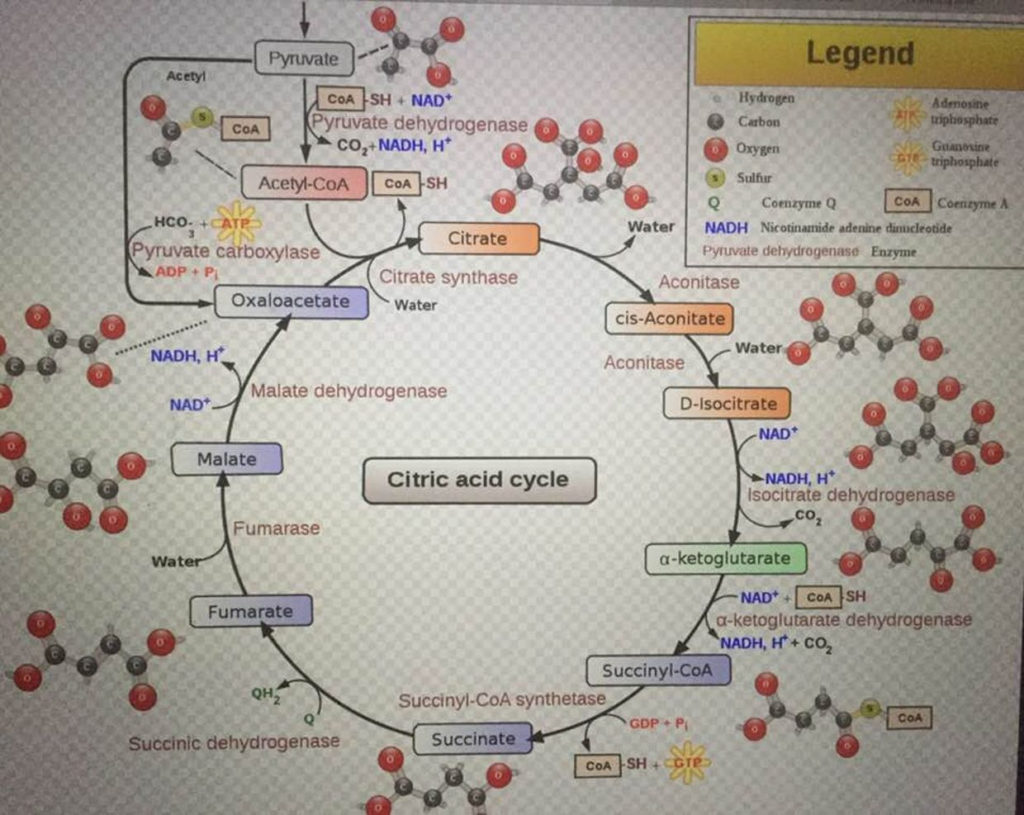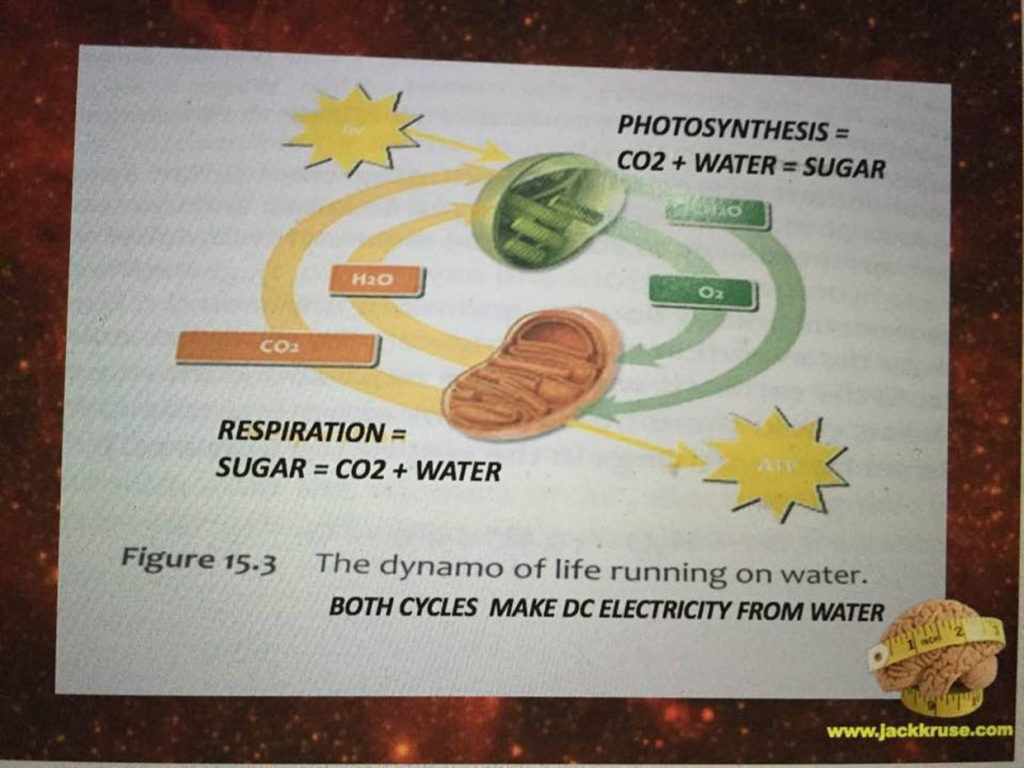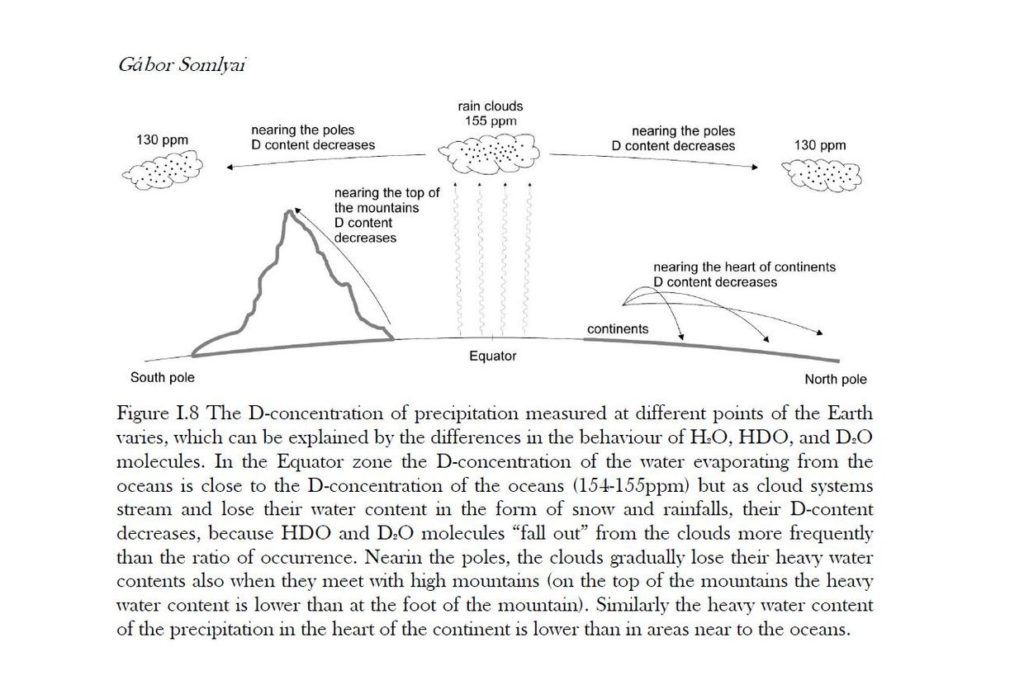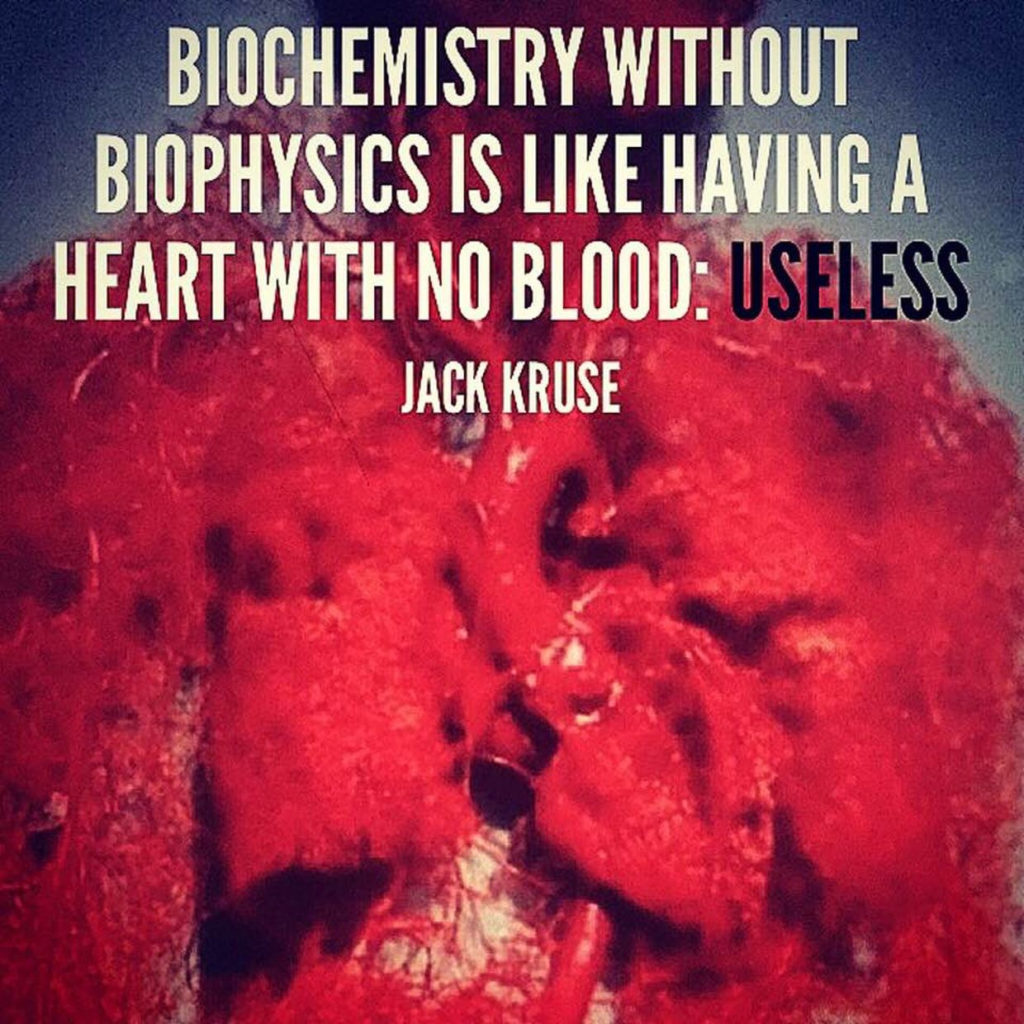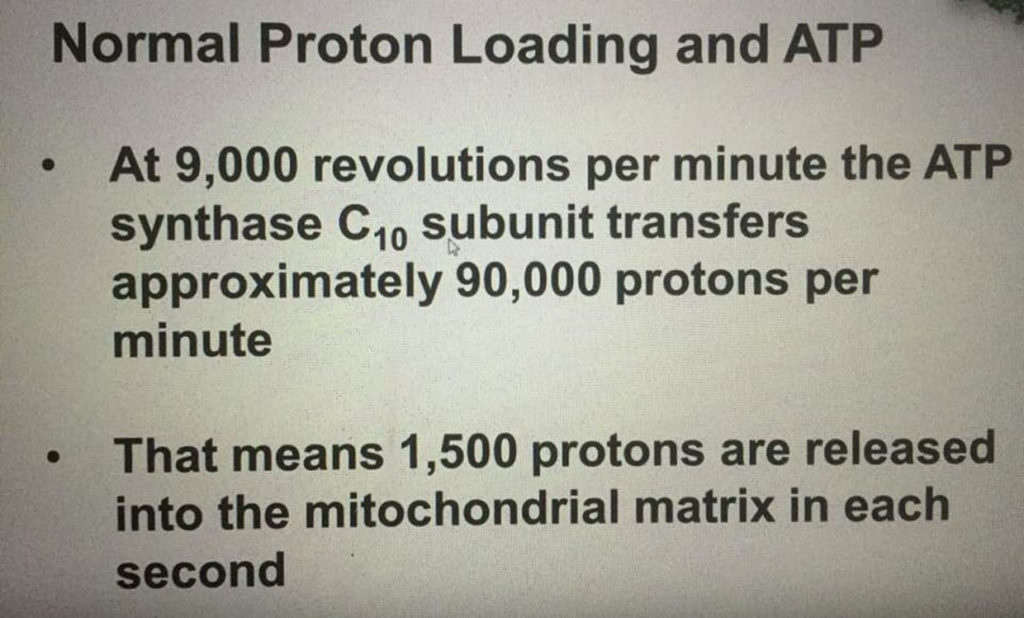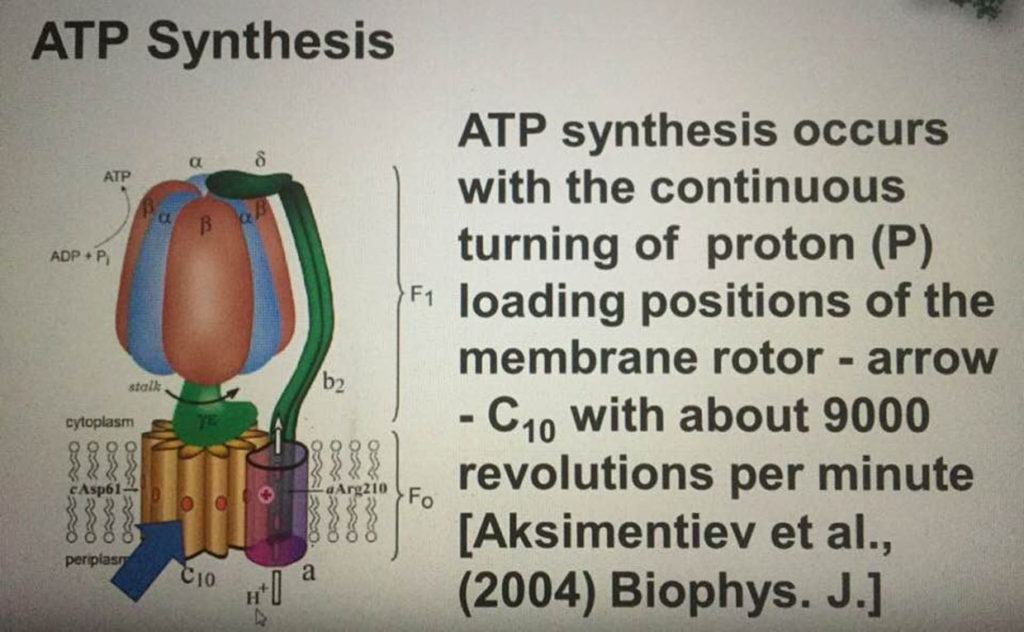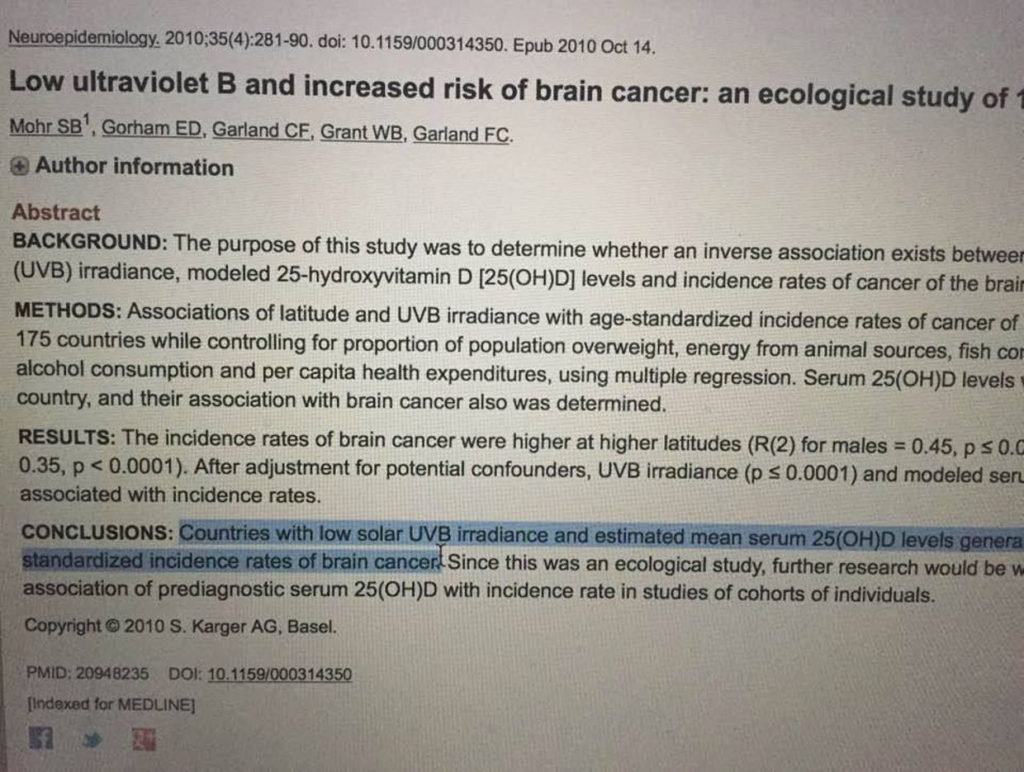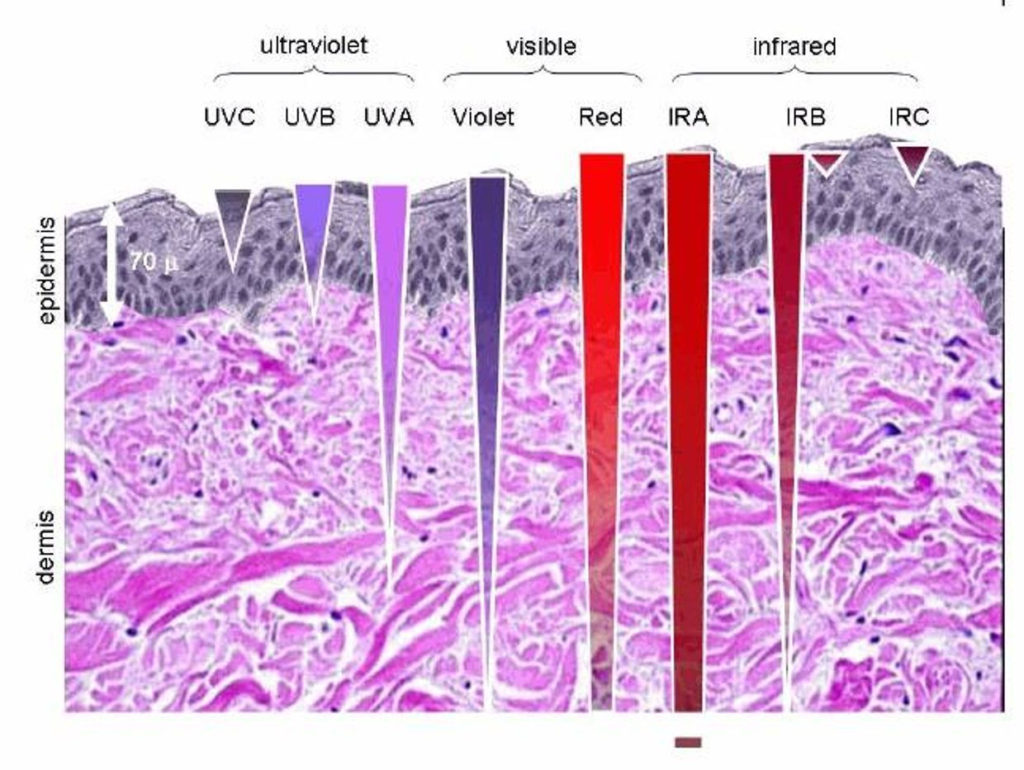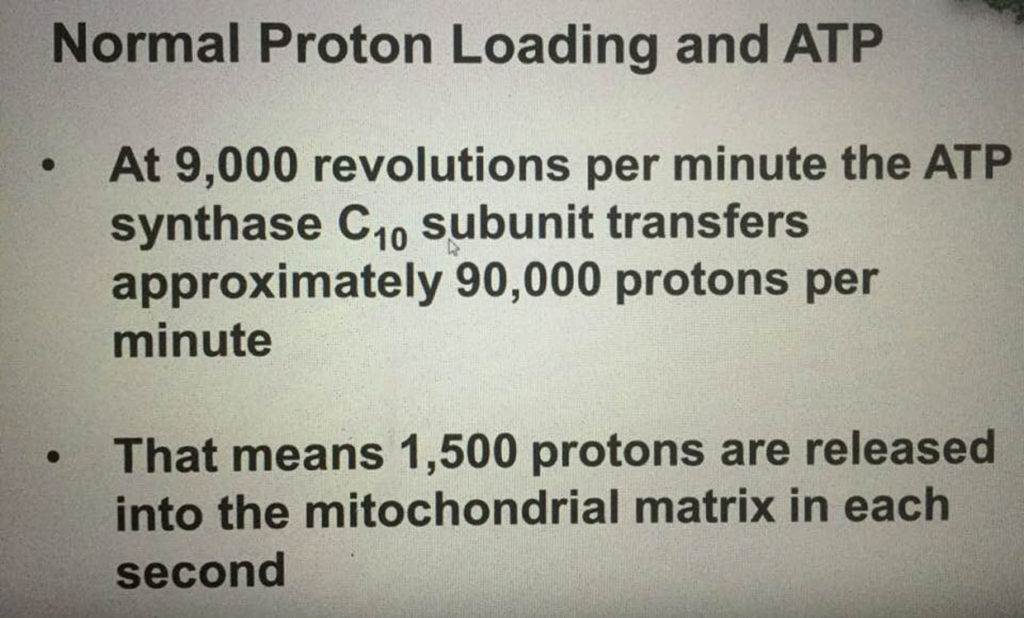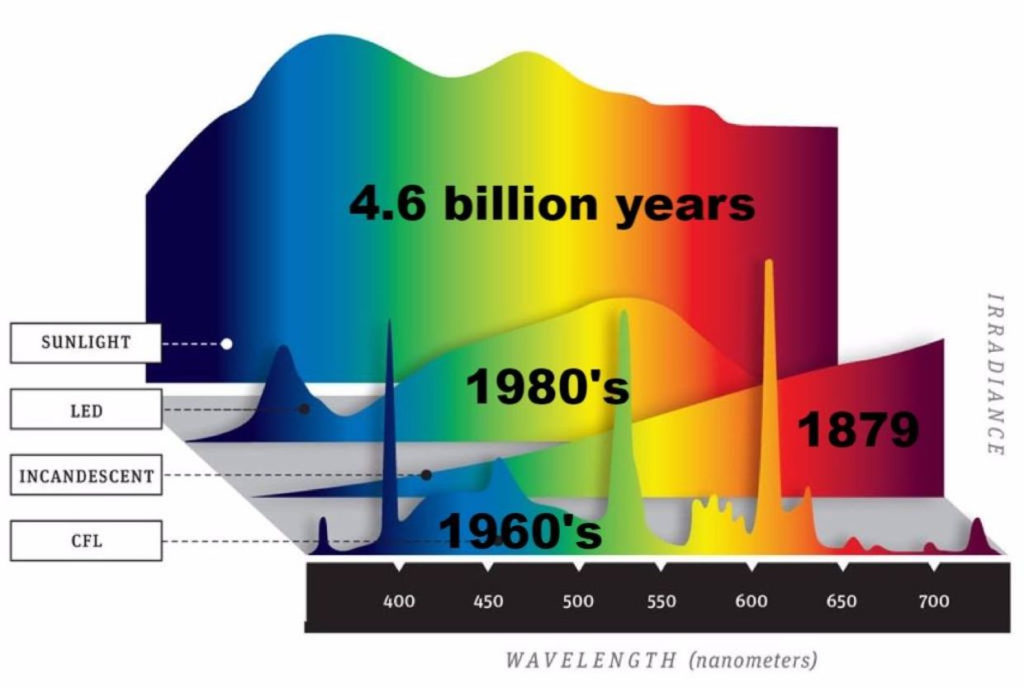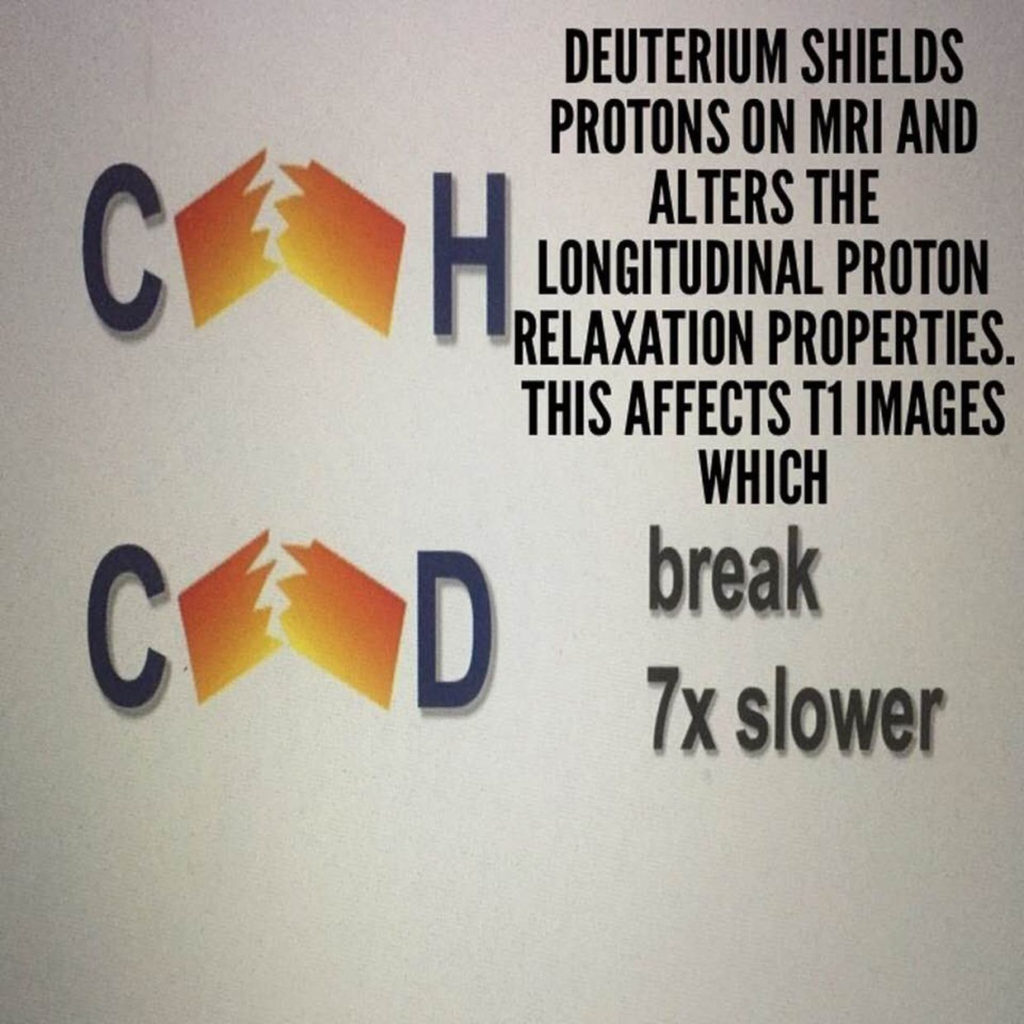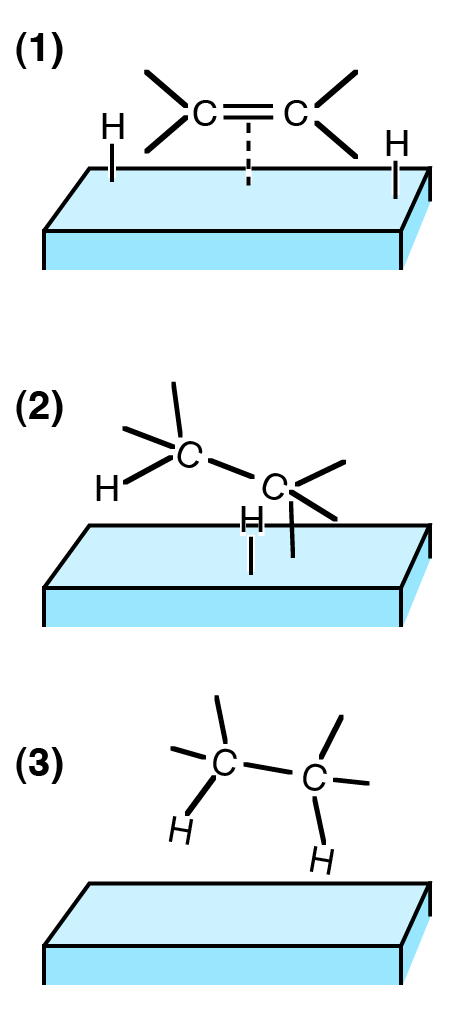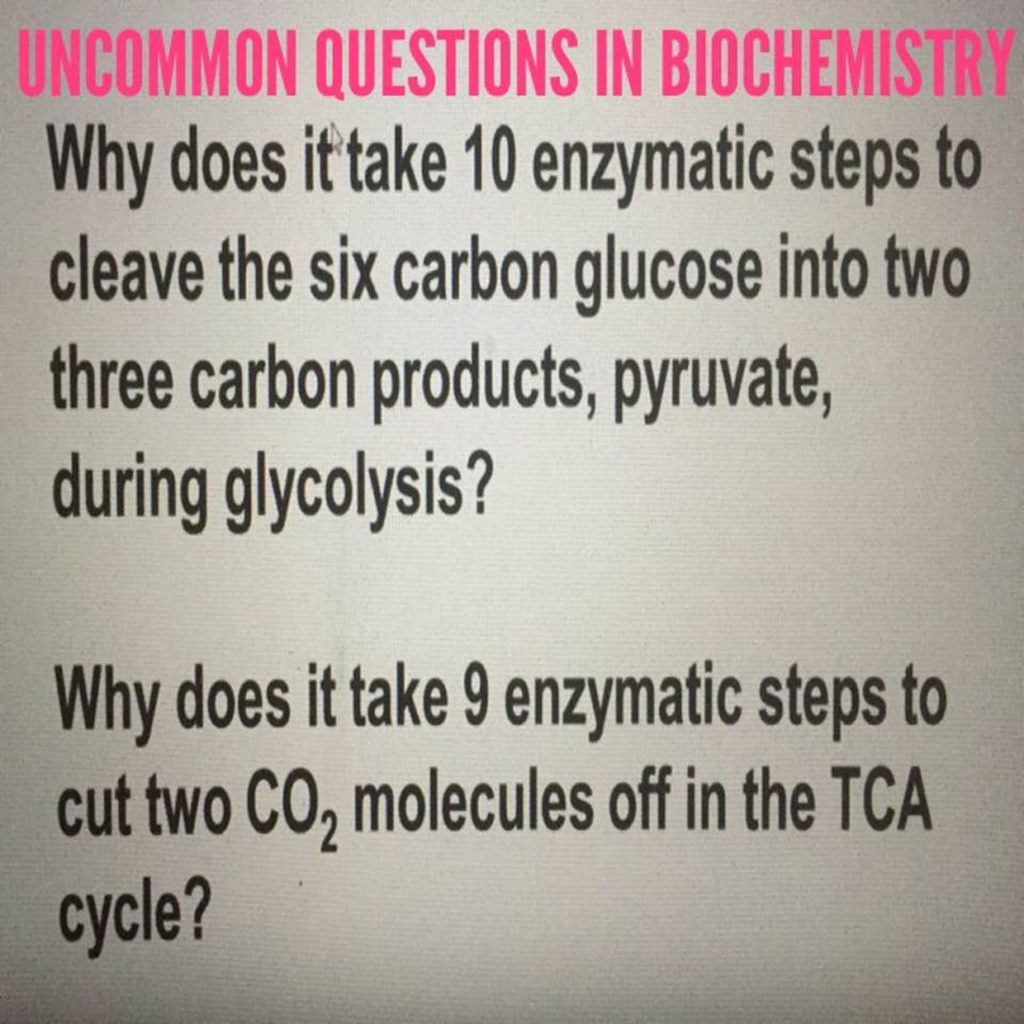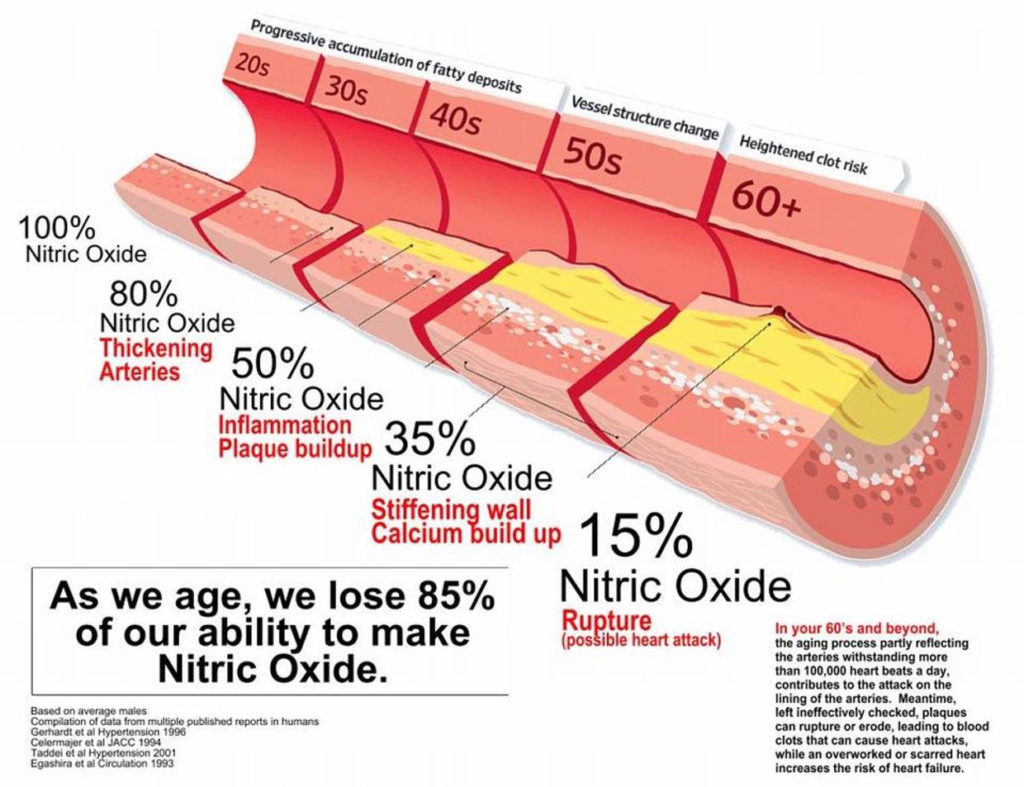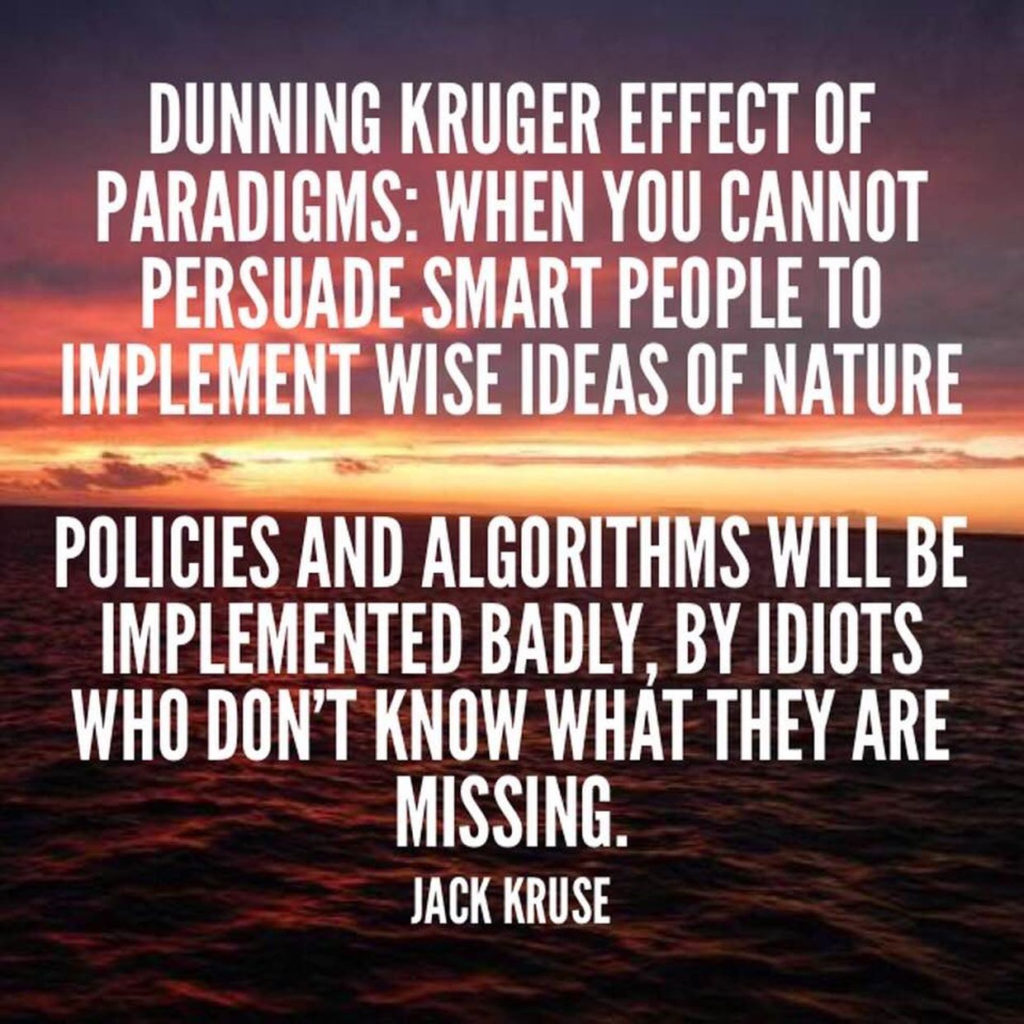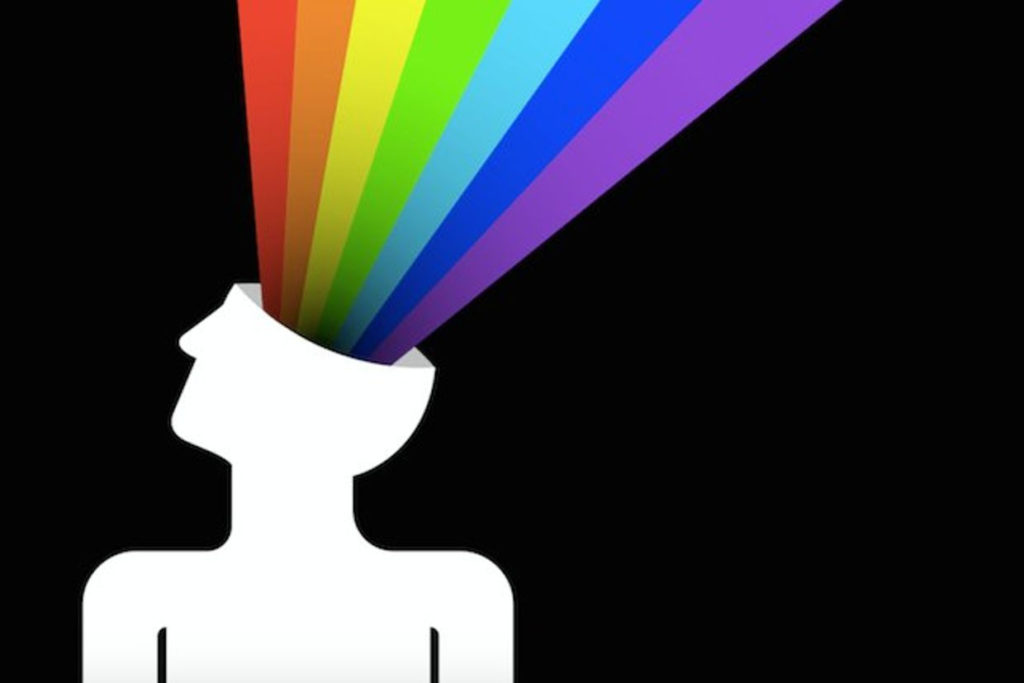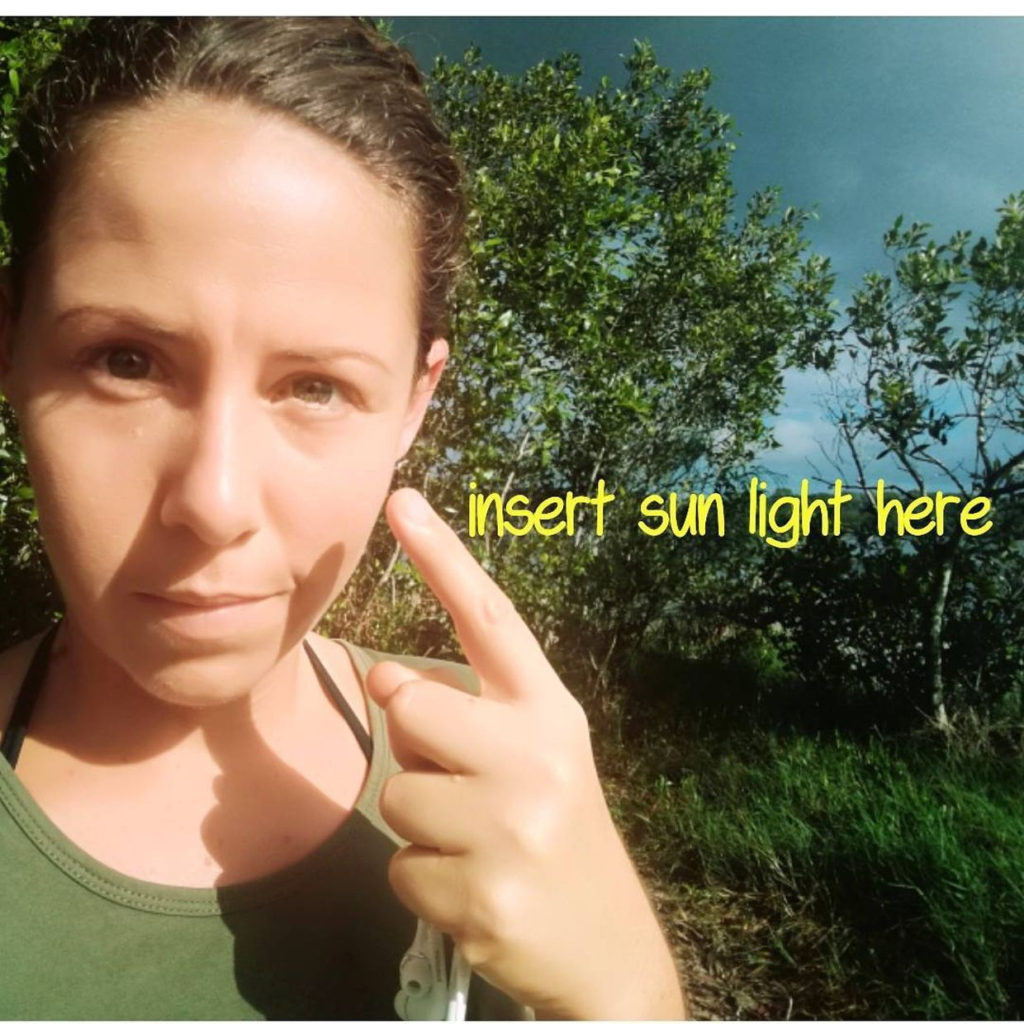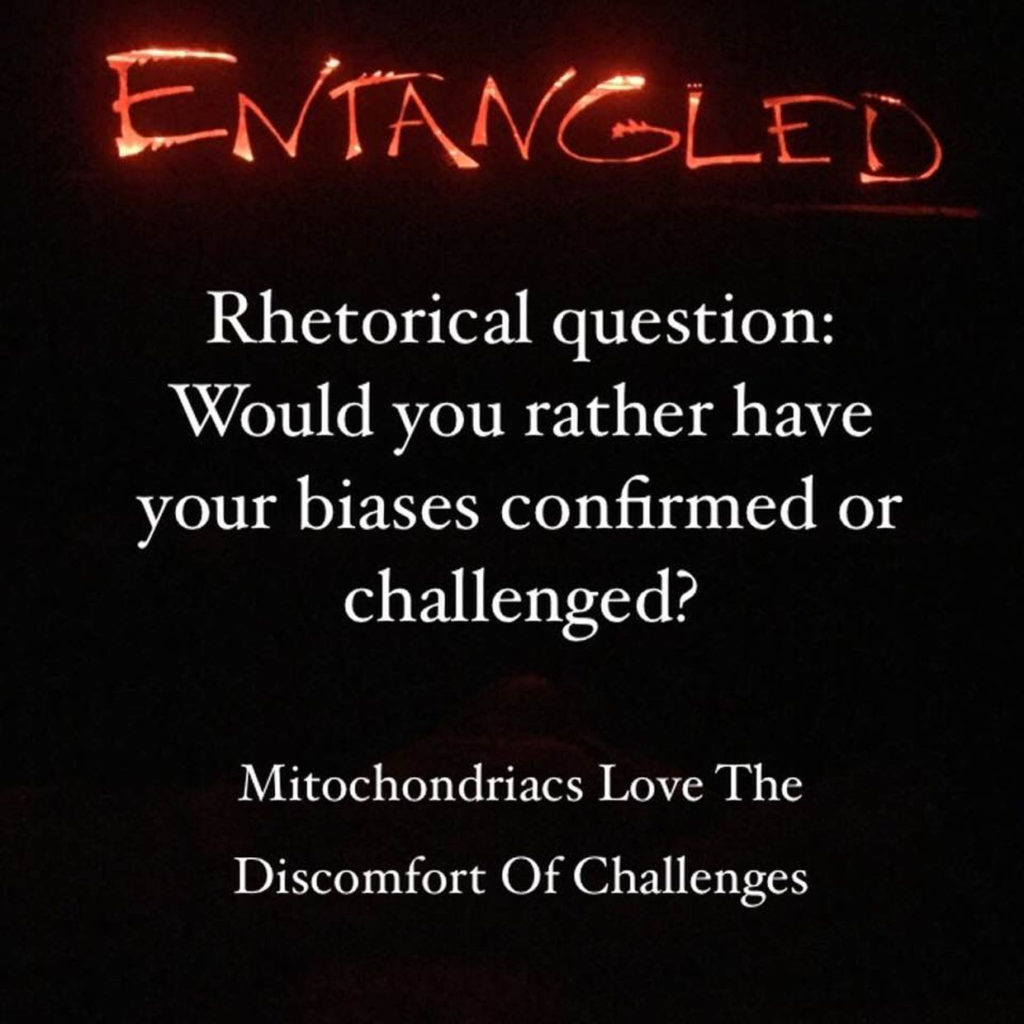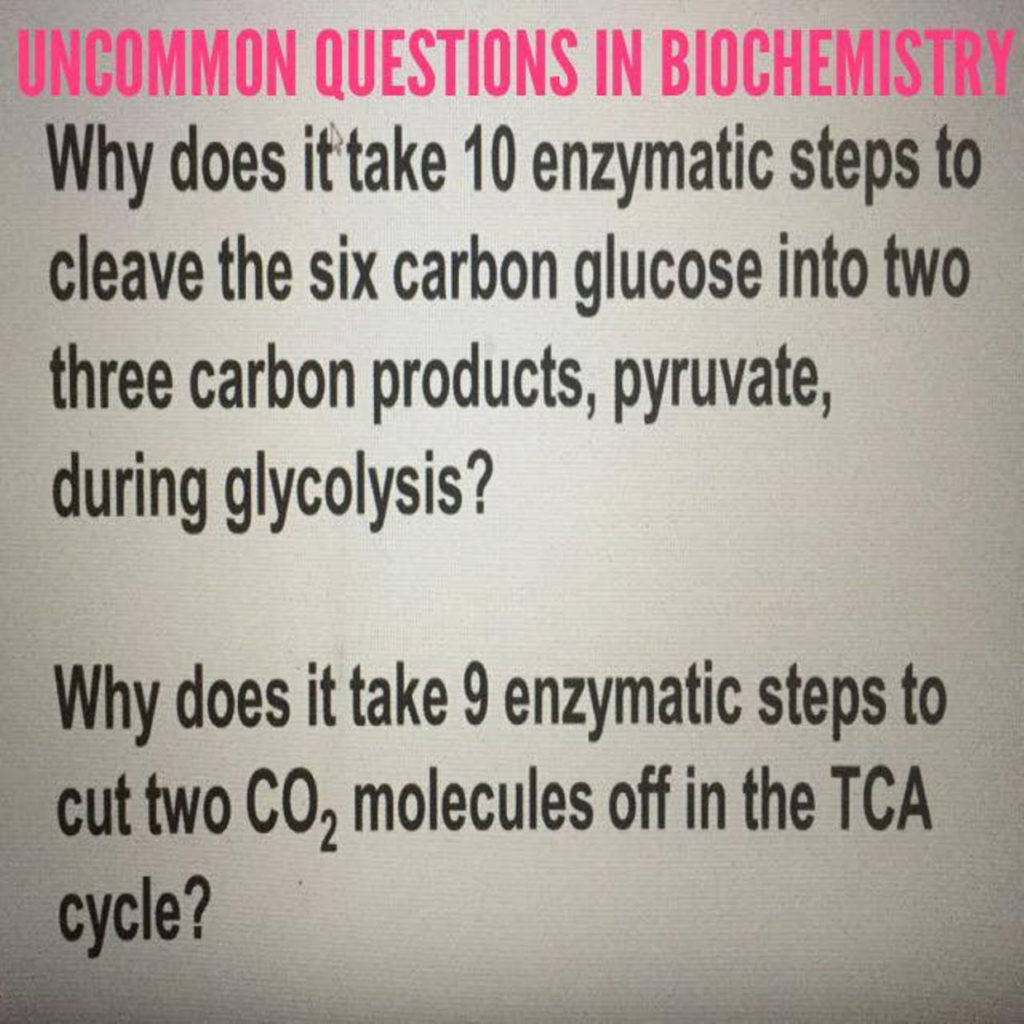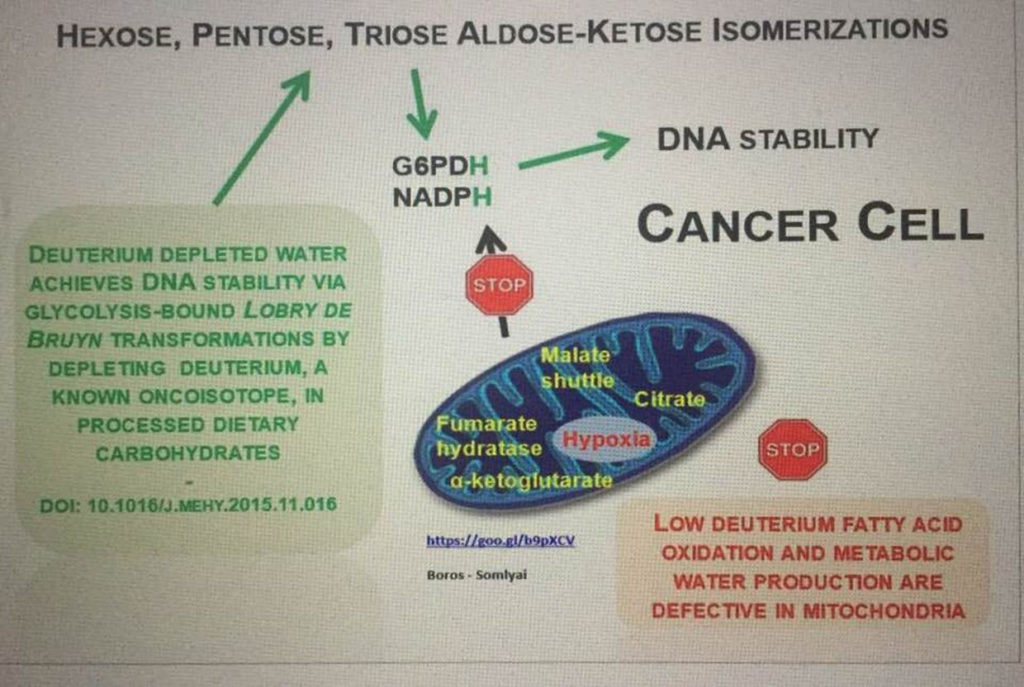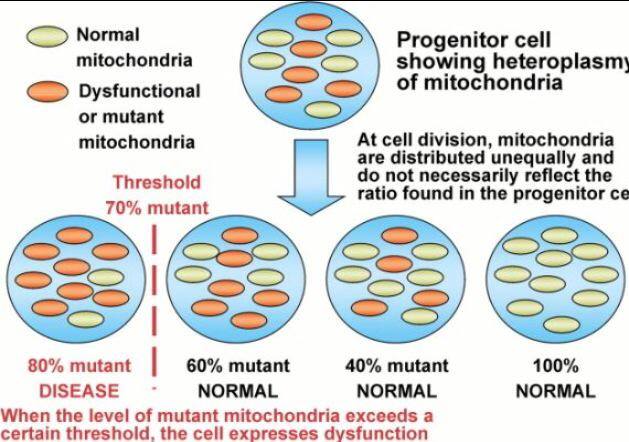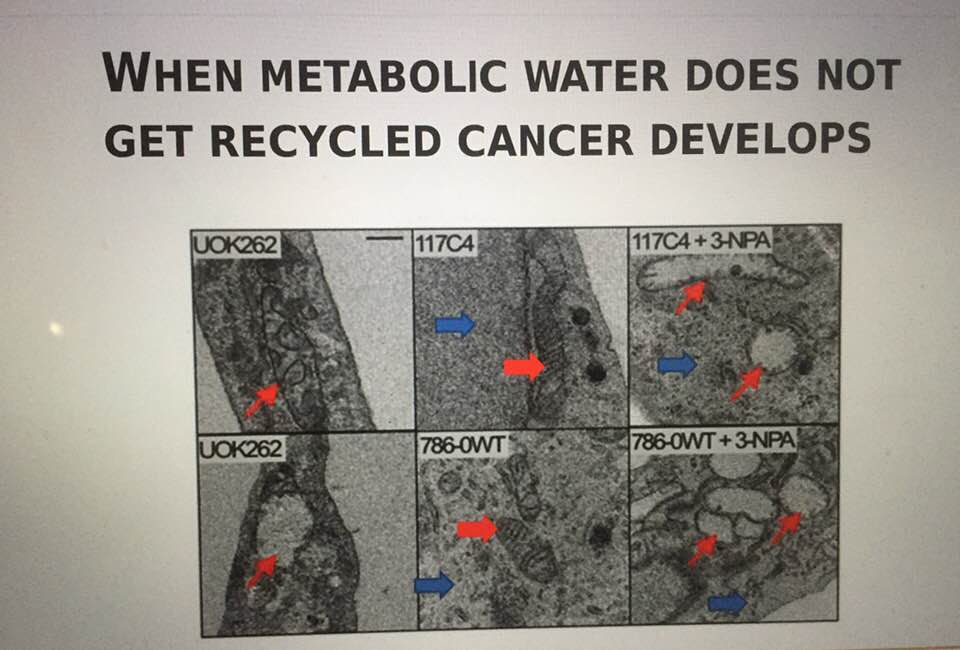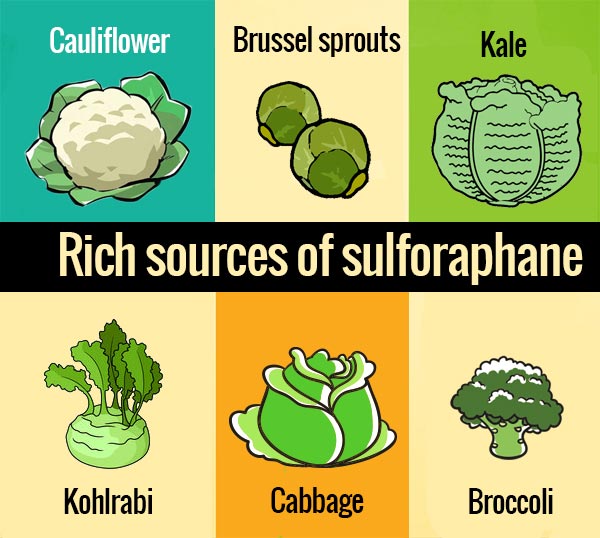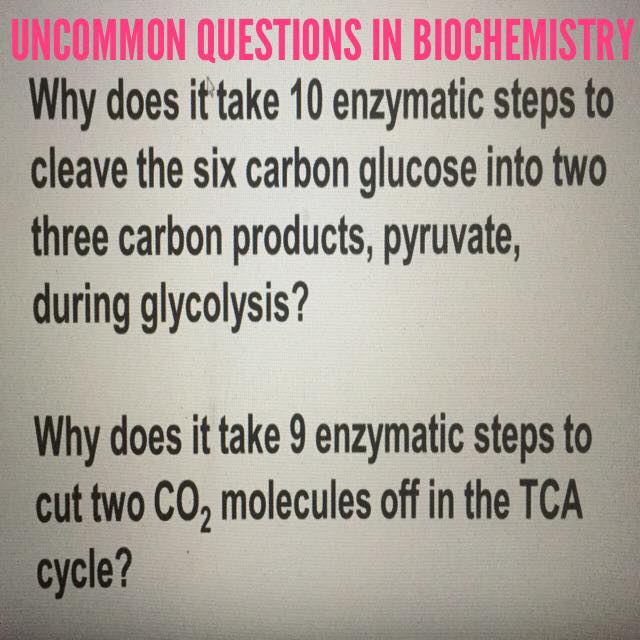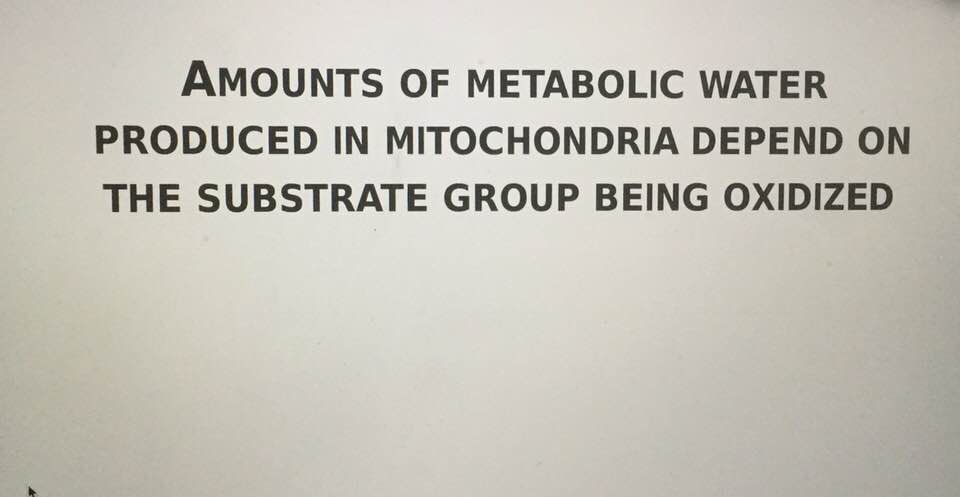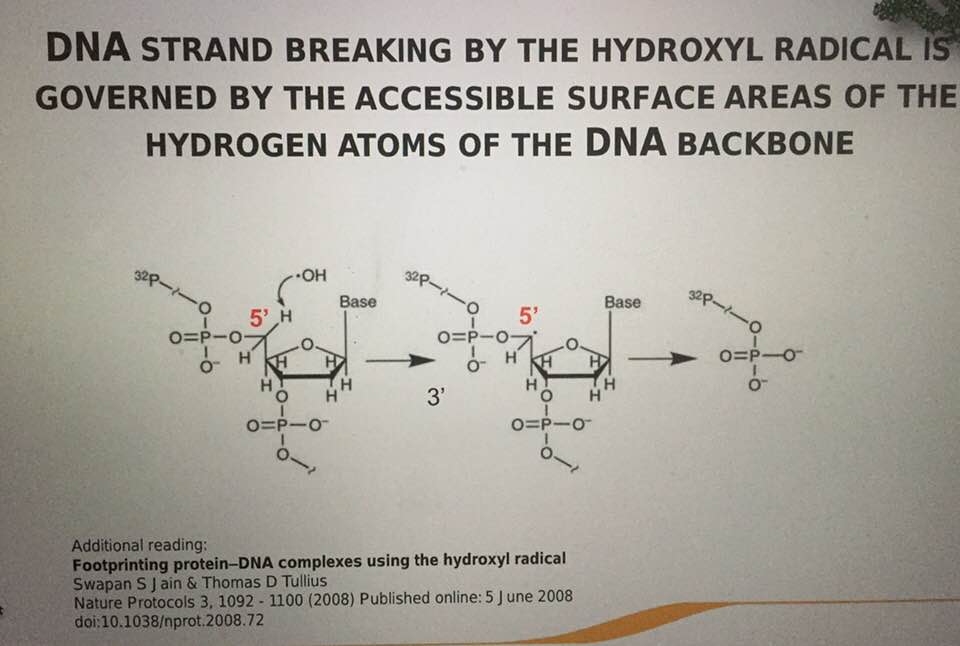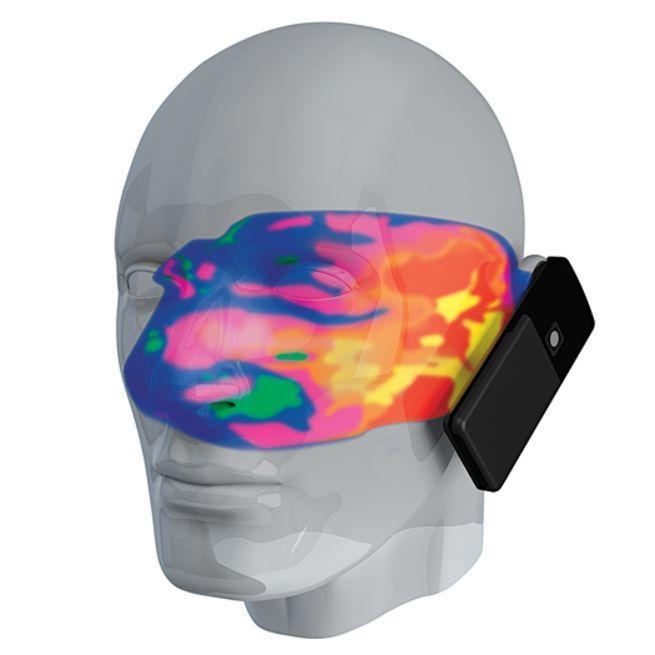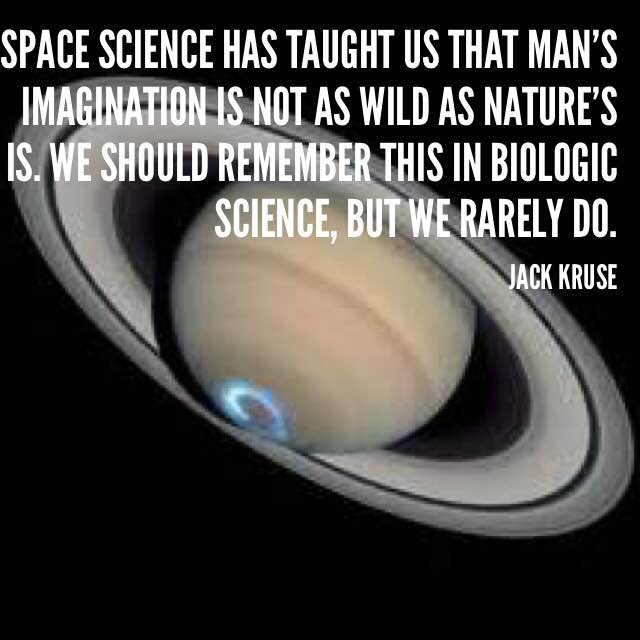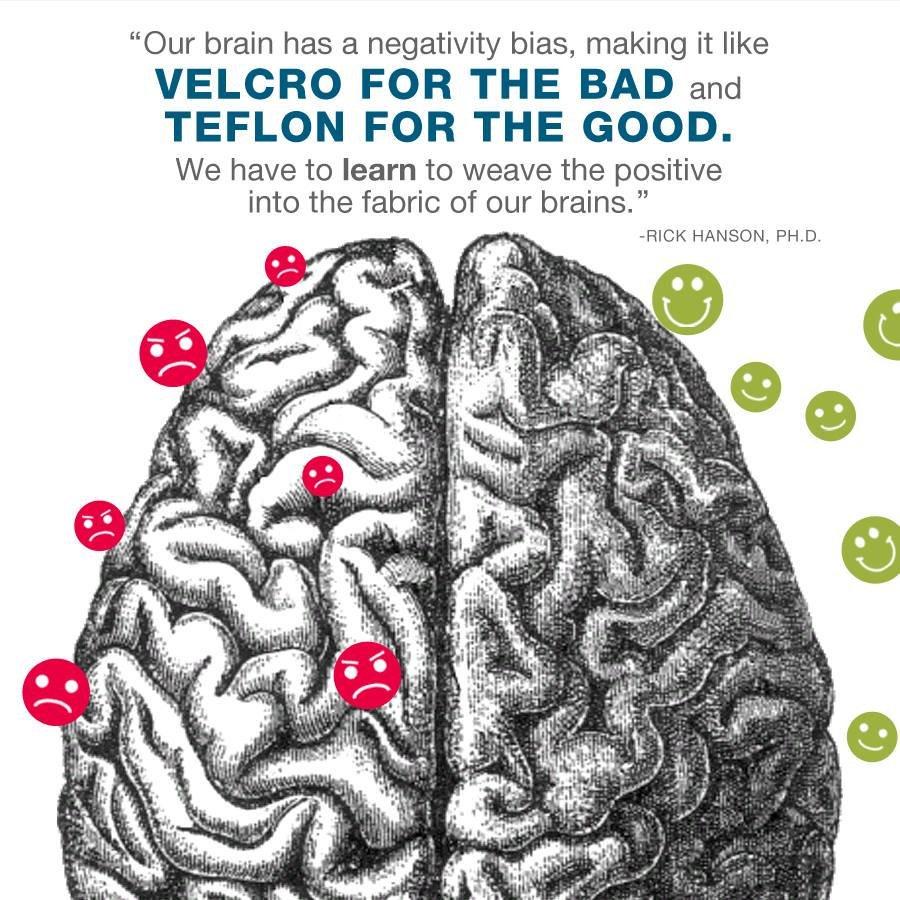
THE TAKE HOME:
- MELANOPSIN COUPLES TO VITAMIN A, SO ALL CIRCADIAN DISEASES CAN BE TRACKED BY ALTERATIONS IN THE RETINA FOR MOST DISEASES IN BIOLOGY
- MELANOPSIN HAS BEEN FOUND TO BE PRESENT IN THE SUBCUTANEOUS FAT MASS OF HUMANS…….WHAT ARE THE IMPLICATIONS?
3. ALMOST ALL OF THESE EFFECTS CAN BE TRACED BACK TO THE RECYCLING OF PROTONS IN TISSUES
In humans, melanopsin is expressed in a small subset of cells representing only 1–2 % of all retinal ganglion cells (RGC) in the retina. These photoreceptors measure the intensity of light (IR-radiance detection) with a maximum sensitivity toward short light wavelength (blue ~ 460–480 nm). Melanopsin works directly with the Vitamin A cycle (retinol) in the brain to allow neurons in the non visual imaging pathways to create a timing mechanism to tell about the photoperiod of the environment. This is one of the cornerstones of how the “eye clock” forms the gears of time within the human brain. Vitamin A coupled cycling in the brain helps set the molecular clocks to fine tune the timing mechanisms of the light induced circadian rhythms. When blue light from AM sunshine first enters our eyes, vitamin A within the brain parenchyma transmutes the light into a chemical signal that signals it is daytime. This signal is yoked to the illumination opsin that uses UVA light in the cornea and the skin to decipher what time of the day it is because UVA light varies as the day progresses. When the neuropsin signal wanes with the Vitamin A signal, the clock timing mechanism in the central retinal pathways “observes” that dusk is approaching. It is at this time sensory acuity in the melanopsin receptors is heightened by dimming light. Vitamin A is also known as retinol in the literature.
People have forgotten that a deficiency of Vitamin A leads to night blindness and to poor autophagy in cells. This means when Vitamin A is low, mitochondria in the eye swell, and heteroplasmy rates will be higher. This is the reason why all astronauts develop optic nerve swelling when they spend too much time in space disconnected from the sun and grounding to the Earth. Interestingly, autophagic induction by retinoic acid has been shown to be critical for both the removal of the toxic proteins in diseases like breast cancer, leukemia, and progeria. Retinol has also been shown to be an important co-factor in T cell activation in our immune system. Autophagy is essential for and upregulated on T cell activation and AMPK activation. AMPK is activated by both exercise, fasting and metformin, but requires leptin sensitivity with respect to light in the eye from your environment first. Proof of this concept is tied to the fact that 1,25 Vitamin D3 has been shown to activate AMPK in vivo to help recycle protons in 3 key metabolic pathways to improve the charge on the surfaces of cells and inside the cytolic water made by mitochondria. Changes in the retina are a sure sign that heteroplasmy rates are rising and it is one of the key things clinicians and patients need to monitor in the coming 5 G world that will be using TetraHertz RF frequencies in communications. This will massively effect the way cells charge themselves, it will effect protons spin, size, and composition in all tissues. Both pathways are required to be activated to significantly increase mitochondrial biogenesis and to recycle protons at the SN-2 postion of the glycerol back bone and the 2′ carbon in sugars. They also determine what type or protons are incorporated into the 3′ and 5′ carbons in ribose used in DNA and RNA. These things have far reaching implications for humans in altered environments. Increased AMPK activates ULK1 to induce autophagy, and promotes activation the master antioxidant transcription factor Nrf2 pathways. This explains how Vitamin dys-regulation of A and sulfated D3 can cause circadian diseases by destroying the ability to induce autophagy at sleep. It also explains why triglyceride levels rise and with cholesterol levels in people in bad environments loaded with nnEMF frequencies.
Vitamin A plays a role in night vision in rods. This tells us why Vitamin A and melanopsin are coupled thermodynamically in quantized fashion. Rod opsins are called rhodopsin. We have red, blue, and green rhodopsins in the retina. All opsins have an isoforms of the vitamin A molecule covalently bonded to proteins in the opsin. Retina’s with lowered Vitamin A levels have shown us they lead to sleep disorders which directly impact cellular regeneration under the power of melatonin. When melatonin levels are low so is tissue sulfation and heteroplasmy rates also rise. In fact, for every increase of 18 ug/dL in vitamin A/retinol levels has been correlated with a 22% lower risk of sleep disorders in NHANES data.
Lutein and zeaxanthin are non-retinol carotenoids found in seafood and eggs that accumulate in the retina to protect against the eye from photic damage from an altered spectrum of light the eye senses. This is part of the reason why the Epi-paleo Rx is built around reconstructing the fiberoptics of the retina to help the brain decipher light signals well. As you heard in the Vermont 2017 talk I view the central retinal pathways as a giant semiconductive circuit that controls all growth and metabolism pathways in humans. The eye uses AM starlight to determine when darkness exists. That AM light is critical to recycling protons with a 1/2 spin in cells. A lack of AM light allows more protons with a +1 spin into our cells to cause havoc.
MOST OF YOU KNOW NEUROPSIN is found in the cornea and the skin. I predicted long ago soon many more opsins would be found in the subcuatneous fat mass because this is the only explanation that helps explain why hypothyroid diseases have explaoded in a blue lit world. It is also why I have told all my members that covering their skin at night in artificial blue light makes a lot of sense. Just because we did not have the proof that our major blue light opsin was present in our fat mass does not mean it is not there. The explosion of hypothyroidism is unexplained by any bio-chemical mechanism. The bio-physics explanation is easy. Look at the picture below and see that blue light (labeled violet below) penetrates directly to the fat mass.
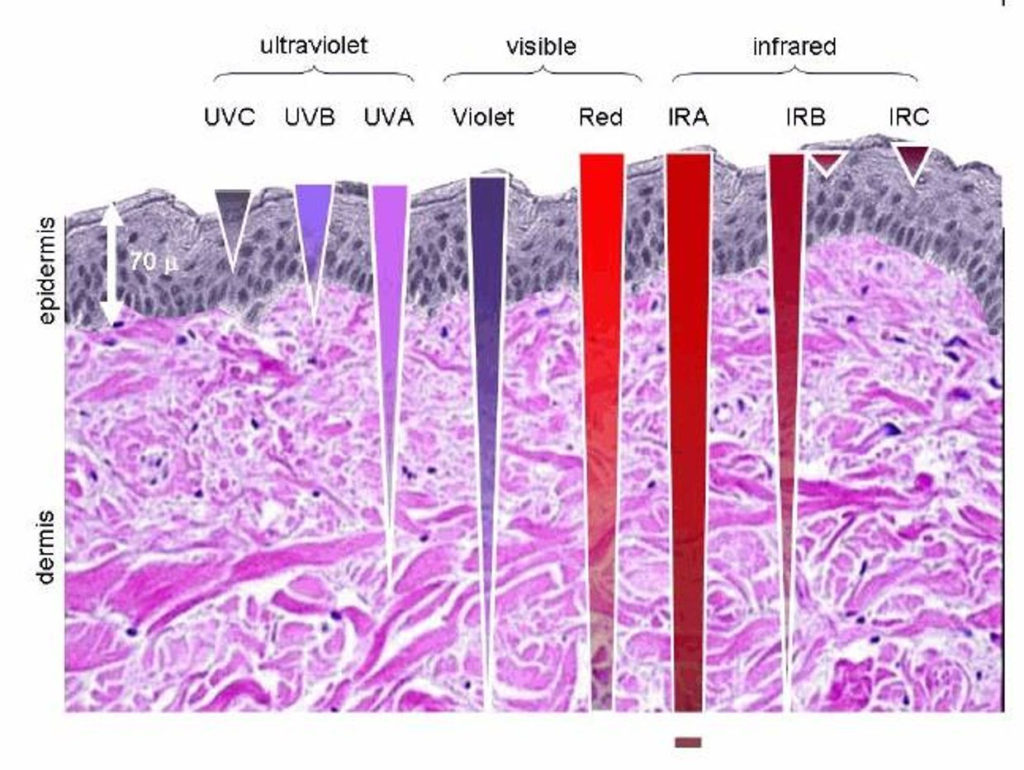
Melanopsin is the blue light photo-receptor (435-465 nm target) in our eyes responsible for relaying sunlight to the SCN to entrain the central pacemaker via the central retinal pathways. In my Vermont 2017 talk I made a prediction in the Q & A that we would soon find that melanopsin would be present in the human fat mass to explain why hypothyroidism and leptin resistance occured in the fat mass under the power of night time blue light exposure of the skin to cause mitochondrial damage. A group of scientists accidentally discovered melanopsin in our subcutaneous white fat cells: HYPERLINK
Now we have proof that my predictions that melanopsin would be found in white fat was spot on. How do these things link back to the central story of obesity that begins in the brain at the leptin receptor in the central retinal pathways? Light on the eye and the skin are the key non linear stimulus to obesity. This is why I have always said obesity is an inflammatory condition of the brain. People have forgotten that the brain and skin are both derived from the same tissues in the embryo, namely the ectoderm. Light is what links them both. Scientists should have expected photo-activation of melanopsin by the absence of blue light from the sun at night. Why? Absence of blue light at night reduces the size of lipid droplets and lowers leptin levels in the blood for the 4 hours of darkness before midnight when leptin signals enter the hypothalamus that I spoke about 8 years ago in the leptin series of blogs on my website. Interestingly, if the bio-chemists really understood light, they would have realized immediately that lack of blue light at night should also be expected to reduce adiponectin. It turns out the recent report on melanopsin in mice fat mass does just that.
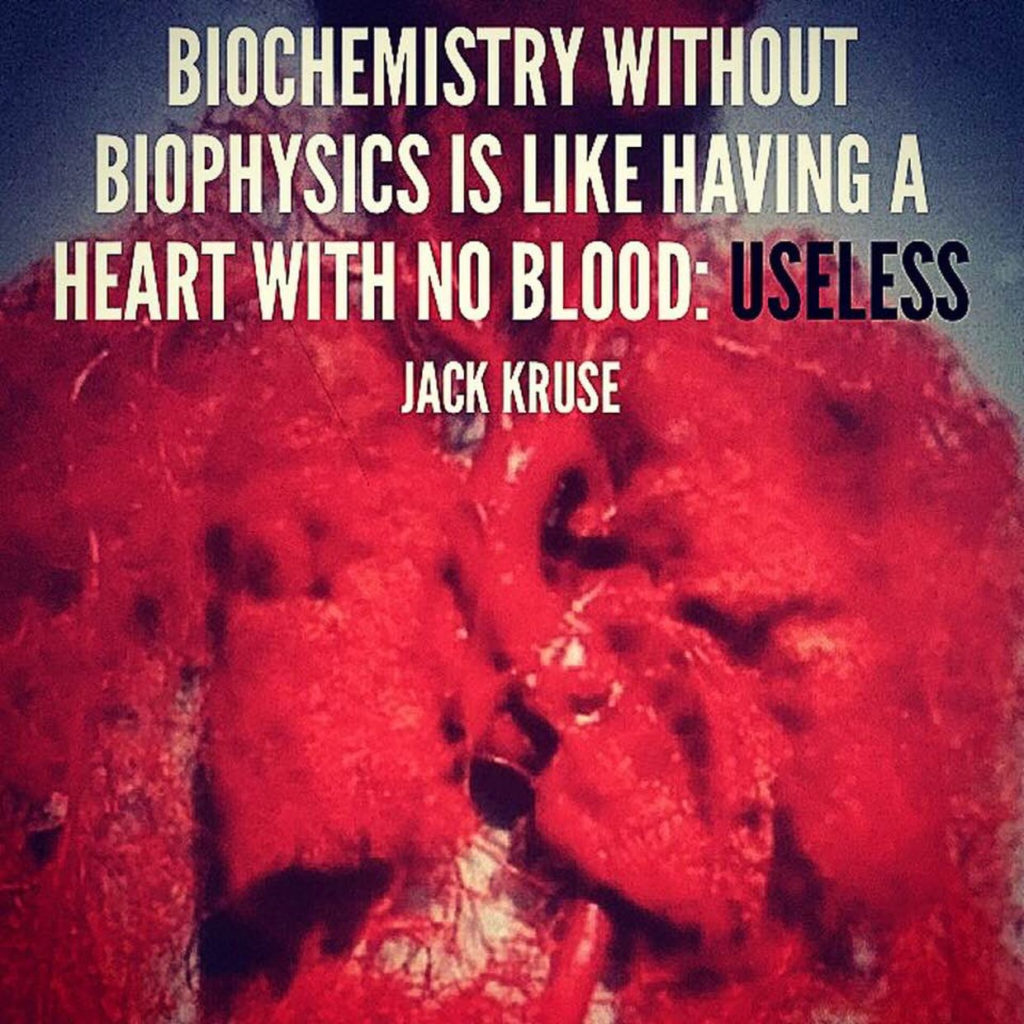
The specific details in quantum mechanics of light is why Lady Evolution built the human retina as she did. If you look at its anatomy you will see it appears like the retina is built backwards. Once you understand why she did it, you’d see why I made the prediction that malanopsin and neurospin would both be found in the skin and subcutaneous fat mass of mammals. In fact, in some papers from 1990’s it was shown that the illumination of a simple penlight on theback of a humans’ knee was the only stimulus that was needed to turn off melatonin function in humans. Nobody could explain the effect back then, but I mentioned in long ago in blogs and webinars and told people the reason it could happen was because of blue light exposure from the penlight had to effect the opsin system. Absense of evidence is not absense of effect. With respect to the retina, it only appears it was created backwards when you have a cursory understanding of anatomy, a lack of knowledge of how energy trumps anatomy in cells. Moreover, it highlights how light acts as the ultimate non linear stimulus to bio-chemical pathways. It shows us how scientists today do not have a quantum understanding of the non linear aspects of light it uses to make sense of our world using small changes in charges of electrons and protons by frequencies of light. This is the key to becoming a mitochondriac. Blue light must be COMPLETELY subtracted from our lives because of how the opsin system is built by nature. I mentioned this in Mexico to Julia, one of my 19 year old members when she came to dinner scantily dresses when she ask me why her mypoia was not improving. If you protect you eyes alone by blue light and not your skin, you have built a half truth in your life. Begin to cover most of your skin at night, and especially the skin around your thyroid gland.
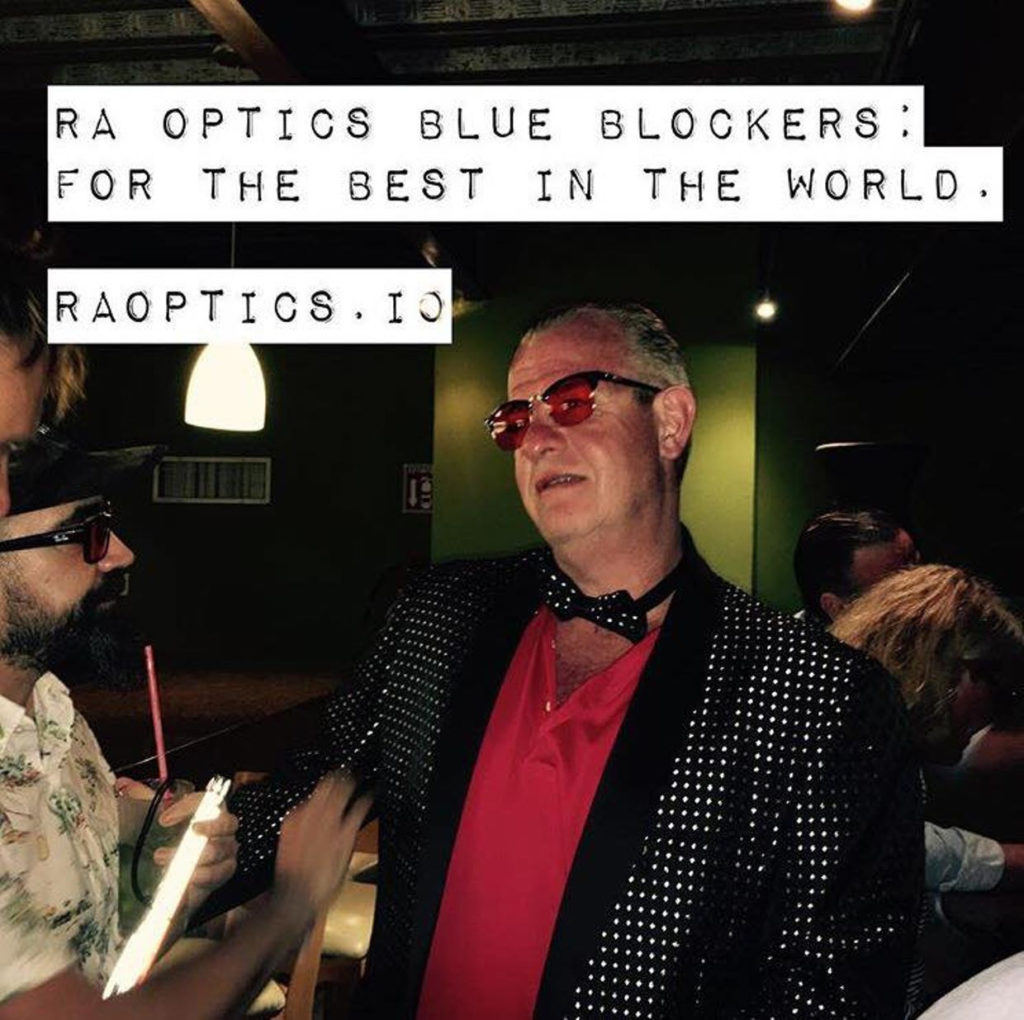
It takes the non linear aspects of light to build what appear to be a counterintuitive retina. Control of photo oxidation in the retina is maintained by the carotenoids (flavins) from a marine diet. Those carotenoids are key to controling precisely the movement of protons in mitochondria and in the retina’s network of bio-molecules. Both of these unusual antioxidants are contained in them. Eggs can be used as a bridge when seafood is sparse, because eggs of mammals also concentrate these chemicals to help control protons recycling in mitochondria. This is why all mammals are drawn to eating eggs of other mammals in nature. Lutein and zeaxanthin improve the ability of the human retina to preserve vitamin A from degradation of light using the GTP type A rhodopsin receptors. Lutein and zeaxanthin, like DHA, are selectively taken up into the macula of the eye by the exosomes of RNA when photodamage occurs. In this way, light damage in the eye strenghtens the eye because it improves the redox potential of the eye, by destroying the normal anatomy to increase the recycling of protons in the retina, where they protect against age-related macular degeneration by protecting us from the blue light hazard at night. The November 2017 webinar laid out this mechanism in detail. In the very same webinar I mentioned that humans stored their stem cells in their subcutaneous fat for use later when the environment became more favorable. This blog now sheds more wisdom on why the subcutaneous fat mass has our most valuable cell present in it. Might it be because we have our blue light opsin system also present in this tissue? Might it be that melanopsin in our fat is waiting for a “specific light signal” to be present before we can use our stem cells to regenerate our tissues?
The answer to these questions are: YES.
Recall that blue light photo-oxidation lowers DHA content of the retina and central retinal pathways. It also lowers the charge and this slows protons recycling ability in cells of the eye. Myopia and retinal thickening results from this effect. This effects the anterior visual pathways ability to work as bi-directional semiconductive gate for information control from the environment to the brain where the leptin receptor is located. Darkness is needed to convert serotonin to melatonin in the gut; then and only then can melatonin travel to the pineal gland to work on the sleep mechanisms there. The melatonin travels via the blood plasma, and the melatonin in blood effects the mitochondria in WBC’s, platelets, and in the pineal gland to get us the “quantum alter” of REM sleep were cells regenerate using autophagy and apoptosis programs in mitochondria. These sleep cycles are massively improtant in clearing deuterium from the system at night. Melatonin lowers heteroplasmy rate because it enhances proton recycling at night (subtracting deuterium from our blood and CSF) to improve the charge of tissues and facilitate regeneration by lowering heteroplasmy in mtDNA. The absence of blue light at night is THE critical non linear light effect for melatonin to operate when the sun is absent by lowering temperature. When temperatures are lowered it lowers the strength of the kinetic isotope effect of deuterium. The lack of blue light at night via the eye and skin is needed to catalyze the solid state conversion of serotonin to melatonin in the gut and blood by using the process of methylation in cells. Methylation is the key epigenetic program that controls regeneration and mitochondrial heteroplasmy. Methylation during darkness mediates circadian clock plasticity in peripheral tissues. Methyl groups have three hydrogen bound to carbon. If these hydrogens are deuterium and they are bound to RNA and DNA epi-genetic expression of melatonin and the opsin systems are LOST. This is why astronauts who are identical twins can go in space and the one that comes back from space will have increased methylation and heavy deuteration of the RNA and DNA. One of our former members, knows one of these twins and I told her when Kelly went into to space I bet that he comes back with very specific eye changes and methylation defects due to an upregulation of this pathway. Now it turns out I was correct. Check out this hyperlink.
This solid state process in cells on the spin of electrons and protons requires a large EZ must be present (DDW creates the largest EZ and redox potential in a cell) and the presence of vitamin B12 and folate. B12 is made in the presence of daylight. Folate is destroyed by strong sunlight and this is why it works at night on DNA to effect methylation of our nucleic acids. Methylation is usually a stop code signal in DNA. I predicted that the space astronaut would return and his genome would be turned on, because all things with a bacteria heritage increases their volume in space to begin to grow because of how volume changes marry to the cell cycle in humans. These changes, if left to go on chronically lead to many mitochondrial diseases like cancer. Why?
Hypermethylation of human DNA is associated with silencing tumor suppression genes that can lead to oncogenesis. This should be really bad news for NASA and any astronaut that chooses to go to Mars. Could this be why human cancers on Earth are growing over the last 120 years? Is our use of the light spectrum in technology gear and screens the reason behind this change in signalling in cells? I think so. Kelly exhibited this change when he returned to Earth. Today, researchers know that DNA methylation occurs at the cytosine bases of eukaryotic DNA, which are converted to 5-methylcytosine by DNA methyltransferase (DNMT) enzymes. You should remember that all the DNA bases are made by the Pentose Phosphate Pathway along with their ribose sugars. I believe the key to understanding the epigenetic program is tied to the type of protons in the 3′ and 5′ carbons of the ribose of these cytosines. Methyl groups have 3 H+ protons. There amount of deuterons present in theses methyl groups would have large kinetic isotope effects on the bond strenght to nuclear bases. People forget deuterium adds a ton of mass to this equation and diminishes how much energy can be liberated from DNA. Moreover, the length of these methylated nuclear bases are markedly altered because of the kinetic isotope effect of deuterium. these radical differences in the nuclear magnetic moments of deuterons and H+. The altered cytosine residues are usually immediately adjacent to a guanine nucleotide, resulting in two methylated cytosine residues sitting diagonally to each other on opposing DNA strands. This diagonal relationship is a geometric arrangement that would affect what light waves in the electromagnetic spectrum to alter their activity. People forget that light waves have their electric and magnetic field at 90 degree angles to one another and this diagonal arrangment is ideal for light to interact with DNA/RNA.
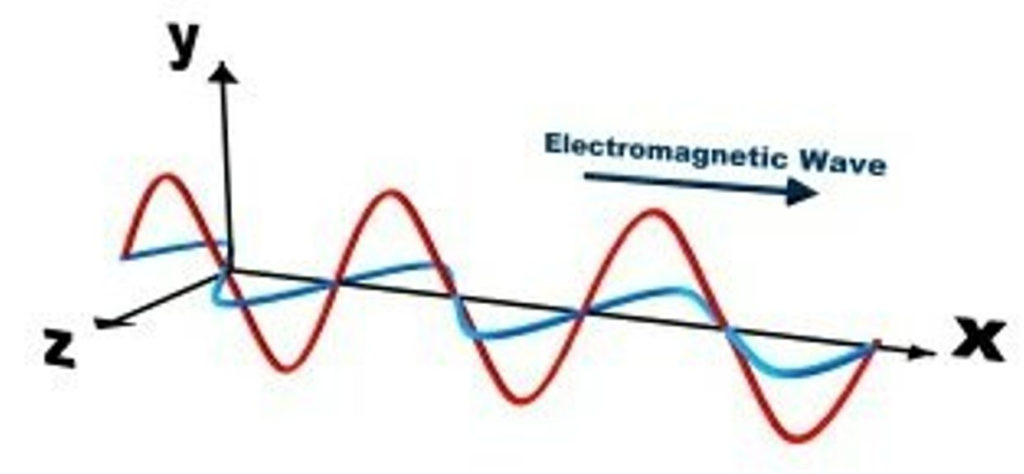
The protons physical state, I believe, is the key to decoding the epigenetic programs of life. Different members of the DNMT family of enzymes act either as de novo DNMT’s, putting the initial pattern of methyl groups in place on a DNA sequence, or as maintenance DNMTs, copying the methylation from an existing DNA strand to its new partner after replication. Methylation can be observed by staining cells with an immunofluorescently labeled antibody for 5-methylcytosine, but we have no way of knowing if the hydrogens on methyl groups are dueterated or not. We do know that deuterium depleted water improves survival in all cancers so far tested in humans. In mammals, methylation is found sparsely but globally, distributed in definite CpG sequences throughout the entire genome, with the exception of CpG islands, or certain stretches (approximately 1 kilobase in length) where high CpG contents are found. The methylation of these sequences can lead to inappropriate gene silencing, such as the silencing of tumor suppressor genes in cancer cells.
Currently, the mechanism by which de novo DNMT enzymes are directed to the sites that they are meant to silence is not well understood. I mentioned this in the January 2018 webinar and in the 12/17/2017 Q &A on genetic diseases. I believe they are 100% tied to the physical state of the proton and I think the proton spin process is critical in the understanding. I no longer think genetic mutations are needed to understand how DNA signaling can be altered by simple deuterium replacement on the DNA backbone.
For all of the reasons I stated above, I mentioned to my members long ago that going to Mars for NASA was not a tenable plan based upon what we already know about mitochondria, light, and proton spin. I believe the key data for us to know about astronaut Kelly return from space was to see if he had the tell tale signs of methyaltion defects present or not. Kelly himself released his data and now we know it is true. Havng Kelly’s data would help a quantum clinician decipher the epigenetic toolbox code further. My bet he comes down with a mitochondrial disease before his twin, who stayed on Earth does, and I bet it will happen in the tissue where his methyaltion defects are elevated. These tissues will have higher heteroplasmy rates and lead to diseases. This is why you always hear me tell you the best situation for humans is to be in environments that keep our mt DNA quiet to keep our nuclear genome silent to improve our energy and charge flux of electrons and protons in mitochondria.
These are the two chemical arms in cells that tell the quantum clinician if a patient is solar deficient and/or blue light toxic. B12 and sulfated Vitamin D3 are linked to the presence of AM sunlight frequencies and this is why pernicious anemia is associated with a lack of sun. This type of anemia results in premature RBC’s being released into the blood and the cells are larger. We know that hypermethylation leads to defects in stem cell differentiation in biology. The stem cells are hidden in bone marrow and our fat mass. Blue and red light get to these tissues easily as the picture below shows.
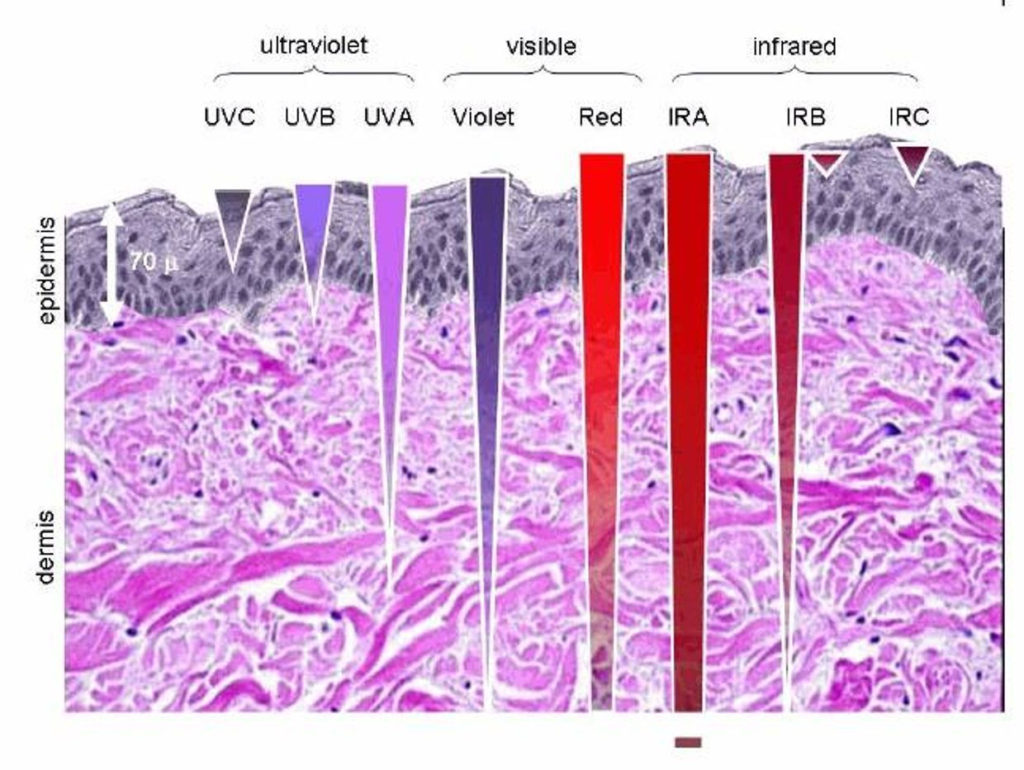
This link of B12 and folate was another link found by Fritz Hollowich in the 1940’s and I covered this link in my Vermont 2017 talk. He confirmed this finding, first reported in the literature in 1927.
Recall that melatonin optimizes mitochondrial DNA to control heteroplasmy rates to maximize energy generation in tissues, while also optimizing tissue level sulfation too because of the effect of charge. Charge is mostly related to the type of protons we have in our tissues. The less charge we have the less sulfation we see in tissues. Light stimulates the non imaging portions of the anterior visual system are designed to create a non linear trail of photoelectric changes in proteins that amplify the incident photon signal the retina senses by using protons size, shape, spin, and charge to facilitate the amplification.
HOW SO?
Melatonin is also an antagonist of the aromatase enzyme so it lowers estrogen in tissues. I showed this in my Vermont 2017 video on youtube. Plasma Vitamin D3 levels happens to be a “light stress hormone” that builds melatonin levels in the RPE of the eye and locally where full spectrum light penetrates our cells. Diseases in men and women with high estradiol (E2) levels in men are signs of sunlight deficiency and a low quantum yield environment because of increased methylation defects related to poor proton recycling. Poor AM sunlight exposure also causes a pro-estrogen pro-growth state. Left untreated, this will cause an increase in the % heteroplasmy rate to cause insulin resistance to manifest in cells because of the “proton crisis” in tissues that lead to many downstream effects in the hormone panel, tissue charge, and the lack of proton recycling. This causes glucose to rise in the blood plasma, we lose control of sulfation of the proteins in our skin and blood plasma, and eventually metabolic syndrome can manifest when the liver is afflicted by too many deuterons. The liver is the source of most of the gluconeogenesis in the body. Dr. Wallace talks about it in the last cite below. He also mentions it in this video too.
The human liver is a lot like the sun (vidoe has it close to the 24-26 min mark). It is where most hydrogen energy occurs in the body and it controls most proton recyling in the entire body. It has a massive effect in the gut and when deuterons are more numerous in the gut lining the gut loses its charge and this is why it become permeable. The only way to repair it is to increase the redox potential of the cell to get rid of deuterons for H+ in the entire system.
When these quantum changes begin to all manifest at cytochrome 1 (NADH) we begin to observe changes in lipid oxidation, lipo-protein changes which result in higher mass and inertia in the blood. This increases the viscosity of the blood and lowers the exclusion zone in blood plasma. ECT slows because the matrix become overwhelmed with too many deuterons over H+ and it swells and the charge on membranes drops quickly. This acts to further decrease the recycling of protons. The “smart natural answer” is not blood pressure medicine, statins, and glucophage, in this case. A better answer is to follow nature cues and get that person in the sunlight eating animal fats and drinking deuterium depleted fluids of any kind. Sensible sun exposure with connection to Earth is best able to charge separate water, charge cells, control proton recycling to build an optimized photoelectric battery around every protein in every cell in the body to allow for proper function to lower ubiquitin marking and control cell and mitochondrial swelling. If the battery function around the protein (water from mitochondria) is not well maintained the protein will be selected for replacement at a huge energy cost to the cell. This is stimulated by the loss of charge and the resultant swelling. The sun’s photons allows cells to make melatonin initially in the globe and its presence there is then amplified throughout the central retinal pathways to the frontal lobes. These photochemical interactions generalizes via statistical mechanics to elevate the production of melatonin and dopamine throughout the visual systems and into the brain. Serotonin is the braking mechanism for melatonin, and glutamine is the braking mechanism for dopamine release.
This is why glucose and glutamine metabolism are up-regulated in a Warburg shift in mitochondria. It is not a pathologic problem. It is a the mitochondria’s reaction to get rid of deuterium and replace it with H+ and change the ratio in all tissues as fast as possible. The H+ in NADH must be deuterium free to work its magic at cytochrome 1 to make the correct free radical signal. This H+ must come from the water in the matrix. The breaking mechanism is wholly tied to the effectivness of recycling protons in cells to eliminate the ones that have a 1/2(e) charge (H+). The protons favored by all living things is H+ that carries a +1(e) charge.
Our eye clock, fat mass, and our camera vision, and all of our other senses like touch, smell, taste, and sound— rely on very specific atomic interactions, which rely in turn on the interactions of electrically charged particles. Light is what alters the charge on electrons and protons in all living systems. The light life works with is solar light and not man made light. Man made light frequencies alters the charge that mitochondria expect during the day night cycle. Light can alter the electromagnetic interactions in all these sensory systems to tune its crystalline lattice or ruin its optimal melody, we call life. Even touch sensation, though for more subtle reasons, relies on electromagnetic vibrations and interactions. Since human senses are all based in electromagnetic interactions of some sort, they are all directly affected by photoelectric interactions that begin in the smallest semiconductors of eye and skin cells. Light first touches melanopsin in the eye and our fat mass begin to build time perception in living things.
This occurs because melanopsin ipRGC have a low spatial resolution and long latencies as compared to cone and rod responses, and they show the ability to integrate photic energy over long periods of time. This firing pattern has to marry to the optical coding of the skin from the opsin system as well. When it is not, the circadian mechanism for deuterium clearance is altered and will not be OPTIMIZED.
IS MELANOPSIN LINKED TO DEUTERIUM CLEARANCE BY FALLING BLUE LIGHT EXPOSURES IN THE EYE AND SKIN?
When light dims as the day ends, melanopsin is activated in all eutherian mammals in their tissues derived from ectoderm. Eutherian mammals are the animals who survived the KT asteroid event you heard about in the last chapter of my book. In non-mammalian vertebrates, they have an intrinsically photosensitive iris in their eye and skins resulting in a local pupillary light reflex (PLR) and skin color changes to sunlight.
Melanopsin is a relatively new photopigment found in the eutherian mammal and human retina and subcutaneous fat mass which regulates non-visual functions of light such as the synchronization of the sleep-wake cycle, and relays photoelectric and magnetic signals to the pineal gland and the allows the pupillary reflex to work in dim lighting for mammals to see as the sun rises or falls. It also appears it is the key quantum event that links to the sleep cycles that begin the clearance of deuterium from CSF and the blood plasma during the various sleep cycles in these animals. If the system gets mixed messaging, it appears to effect the clearance of deuterium from our tissues that lead to an inability to regenerate properly when the sun light absent.
This “type of time” built in the hydrated proteins of the retina and subcutaneous fat is critical in the shape shifting cascade that occurs in this light system. The critical difference in this type of time is how we are able to observe the “past” and “future” time in reality. The idea of “past” and “future” only exists in human reality if heat is present somewhere in the cascade of energy transduction. Thermodynamics is the science that teaches us this and this science was innovated by Ludwig Boltzman. He developed statistical mechanics, which explains and predicts how the properties of atoms, such as mass, charge, and physical structure change with time. These things determine the physical properties of matter in the retina once light hits the photoreceptors and water. When this collision occurs, things like viscosity, thermal conductivity, and diffusion change and build the reality we all enjoy. Heat is a red frequency of light and it makes atoms and molecules move in certain ways. Heat moves dueterons and H+ differently. Heat concentrates deuterons and H+ moves away from heat sources and goes to the surface. This was critical at life’s beginning and it is the reason why I am not a fan of hot coffee or tea.
Warmer temperatures concentrates deuterons, fluoride, and bromine. All have massive effects on H+ in water and lower the amount of DDW in the matrix and lower the size of the EZ. When the size of the EZ is lowered the redox potential of the cell SHRINKS.
Heat is liberated in the mitochondria of every mammal on this planet. Heat creates reality because it creates TIME by moving things with mass. Protons have a lot more mass than electrons, therefore red light (heat) is optimized to work with proton motions and recycling programs in cells and mitochondria. This maybe hard for you to accept initially, but when an Alaskan native sees spring break from the winter for the first time, they always remark that the pace of life seems to pick up in spring and accelerates in summer. This is not just a perception, it is reality related to the changing diurnal aspects of light in that season at that high latitude. Light is constantly present 24/7 at this time.
The reason is simple and linked to physics of light. At polar regions sunlight is compressed in to shorter periods of time in spring and summer, so you can see the effect of powerful light on time in living systems very easily. Spring is when heat and light return and life speeds up because time speeds up because proton recyling improves tissue wide. Heat comes to us in a form of red light from the sun. That light comes from H+ in the photosphere of the sun. 42% of sunlight that falls to Earth is IR-A light that looks to control the movements of light hydrogen. UV light is also capable of generating heat because it can be shifted to red photons in a hot plasma (like the EZ) to make more heat, but only 1-4% of sunlight is in the UVA/B ranges that falls to Earth. This frequency shifting of light is what the Q- cycle and water does in our mitochondria to build a strong EZ around it. The directions of these motions caused by red light in our mitochondria are critical to understanding probability of quantum mechanics of protons in cells and to really understanding the reality of time creation by living things. Quantum mechanics is the science of probability.
In the 21st century statistical mechanics of heat movement has now been extended to electromagnetic and quantum phenomena by QED theory. This was important in me figuring out what Szent Gyorgi really found when he noted that fumarate hydratase controls water creation in mitochondria. This enzyme is critical in the placement of H+ in TCA intermdiates, in glucose, and in glycerol, and glycogen back bones. I realized the rules of QED would control all aspects of protons. Light can control the charge, spin, radius, size, and movements under red light because Feyman extended the thermodynamics of Boltzman. Today, because of Boltzman’s work, we know both space and time must vibrate (if Einstein is right about them) or move, but we still do not know how to describe this process well with words or with mathematics. Einstein tried to do this and came up with a geometric solution of the idea of curved space/time. The Standard Model of physics has embraced this idea of curved space/time as gospel 100%. I told you in the Sun blog in the reality series , I have rejected this idea because of how I view time creation occuring via light transmutation to other forms of energy. Humans only see energy when it is transformed from one form of energy to another. This is because of the Quantum Zeno effect. Once the living system observes the effect, the effect vanishes from reality by quantum laws. This offends common sense, but it is how nature operates.
Think about lightening in a storm. Its power comes from the solar wind, and it is created when this light is slowed by the ionsophere, and captured and transformed into lightening by water droplets in the sky, that then discharges the energy in light form we call lightening. This is a big deal because the bolts that hits Earth and unleashes the nitrogen cycle for plants and animals to make foods from photosynthesis to build the chloroplast nitrogen cage and breaks the triple bonds of N2 to make N available to plants. This process is the basis of the entire photosynthetic pathways that form the food webs on Earth. That makes it pretty important. The threads that nature uses sunlight for are vast and hidden from our perceptions in our senses because of the rules of quantum mechanics. The one sensor that always pays attention to them ALL is our mitochondria. It reacts to energy drops by altering its charge to swell and change cell volumes. This is how quantum mechanics is transformed from the QED rules of light and charge to Boltzman’s three thermodynamic laws.
Mitochondria, like the sun, also release heat. Heat, as we all know from our observations in reality, always moves from hot things to cold things. This should make you ask yourself, why does heat always seem to go from hot to cold and not vice versa? Is there a universal law that says this is axiomatic? It turns out there is no universal law that tells us this. So this raises the question why does it always appear this way in our reality that HEAT flow goes from hot to cold?
IS SHAPE SHIFTING JUST ANOTHER DESCRIPTION FOR THERMODYNAMICS?
Light from the sun has energy that “shape shifts” Vitamin A, the opsins, and the protons in the eye and skin to alter their charges, and that small charge alteration is capable of confirmational changes in the rhodopsin system (GTP circadian gene sets). These small changes are also what destroys melatonin’s ablity to control mitochondrial DNA in cells. These changes alter the thermodynamic ledge in the retina of the eye and the central retinal pathways that lead to cascading effects from the cell membrane down to the mitochondria to drive energy flux through out the retina to the central retinal pathway. Vitamin A is tightly bound to opsins in nocturnal mammals like rodents (mice in the melanopsin cite below), but it is loosely bound in diurnal mammals like humans. The loose binding is why humans are so sensitive to blue light photo-damage at night. If deuterium is in this system its kinetic isotope effects massively influences the bonding affinity to ruin how the system operates with light!!!!!
These small changes in these proteins alters the tension within the cell water (where protons are excluded to move and recycle) and this changes the charge around all proteins and lipids, and carbohydrates involved in metabolic pathways. How protons move in these pathways was first worked out by Albert Szent Gyorgi in the 1930’s. This effects the proton motions and the potential battery effect in cell water around every protein in our cell when this change occurs. This cascade then immediately effects the output of energy flow in mitochondria by small changes in volume in the outer mitochondrial membrane space which changes the charge in the outer mitochondrial membrane which connect directly to the endoplasmic reticulum membrane (ER) of the mitocondria in the retina, fat and skin. The ER is the site of protein construction in the cell. The ER is connected directly to the Golgi apparatus that does post transaltion modification of the protein to add lipids, carbohydrates, and protons in specific regions of the completed translation before the cell deploys this bio-molecule. Where those protons are deployed, determine how sensitive the entire cell, tissue, and organism is to light radiations in their environment. This is how one becomes electrosensitive, in my view. When more protons are 1/2(e) charge (deuterons) versus H+, the more sensitive one becomes to all aspects of the electromagnetic spectrum and the more heteroplasmy rates rise with an associative increase in ubiquitination rates.
The Endoplasmic Reticulum is physically, electrically, and optically connected to the outer mitochondrial membrane which vibrates and sends its shockwaves through the cell water to the inner mitochondrial membrane where the cytochrome proteins change energy from one form to another. Here the mitochondria make water, H+, and ATP.
In proton chemiosmosis, the energy stored in the gradient is used to make ATP. Because protons are electrically charged particles (+1(e), the potential energy stored in the proton gradient is electric as well as chemical in nature. The electric component corresponds to the voltage difference across the inner mitochondrial membrane, with the matrix of the mitochondrion negative and the intermembrane space positive. The membrane is critical in protons recycling because the charge acts to filter out all the deuterons and favor all the H+ for recycling in the matrix and in all our bio-molecules. This charge differential in the mitochondria sets up a huge capacitor that is surrounded by another water capacitor filled with a large exclusion zone driven by the heat release of the proton gradient and electric field. It also is the major sieve that filters protons in cells. This is how the two sides of the energy equation remain so efficient in eukaryotic mitochondria. The last part of the equation is to understand why ATP breakdown to inorganic P and ADP, AMP, and adenosine are important in mitochondrion. It also begins to explain why we have two separate adenine nucleotide transporters (ANT1 and ANT2) in our mitochondrion as well.
Watch this video again to pay attention to the ANT1 and ANT 2 importance in heteroplasmy development. You’ll begin to see how deuterium content affects things like sleep and regeneration to lead to many mitochondrial diseases.
CITES:
http://www.researchgate.net/publication/298808781_Light-sensitive_brain_pathways_and_aging






